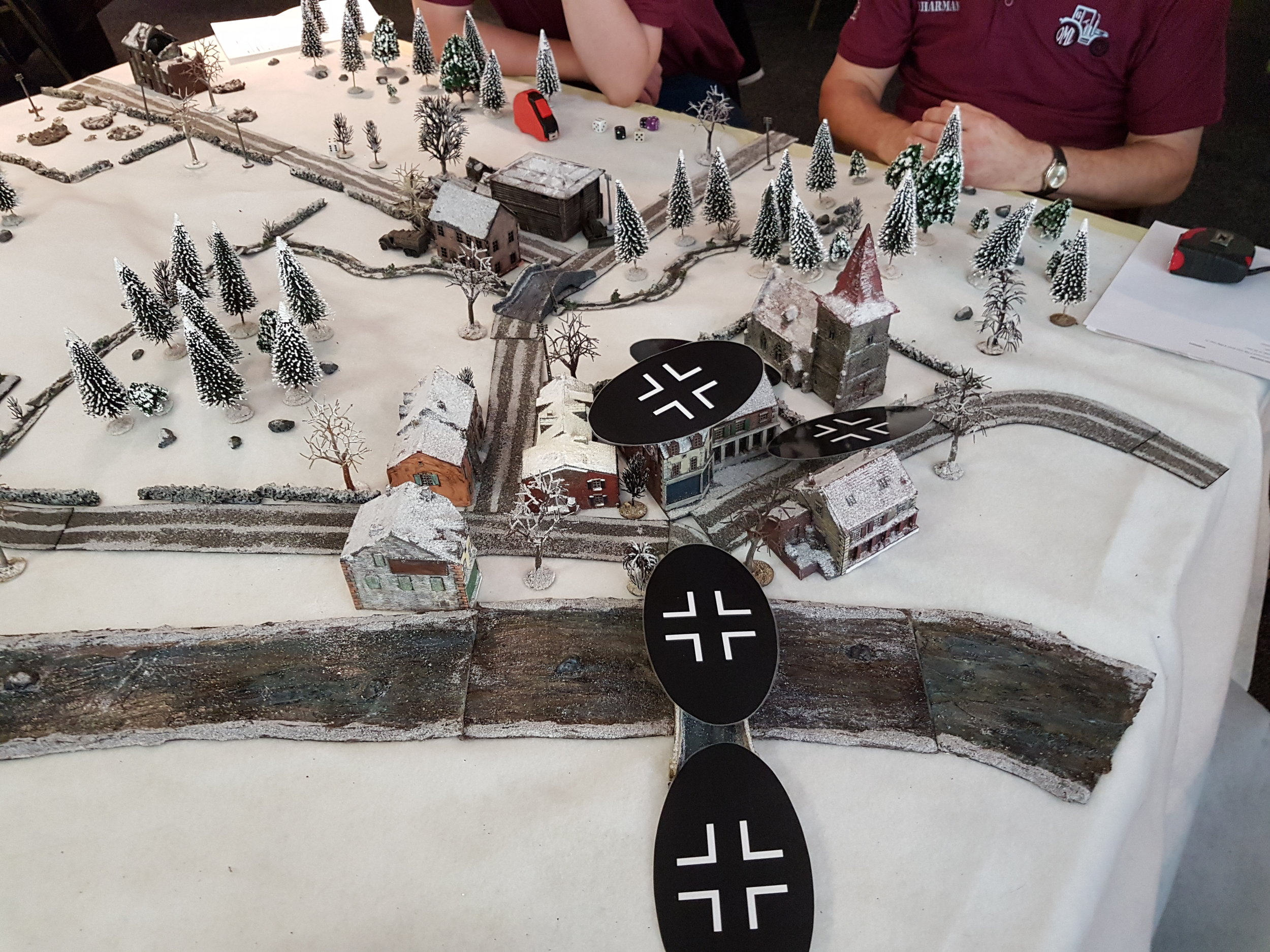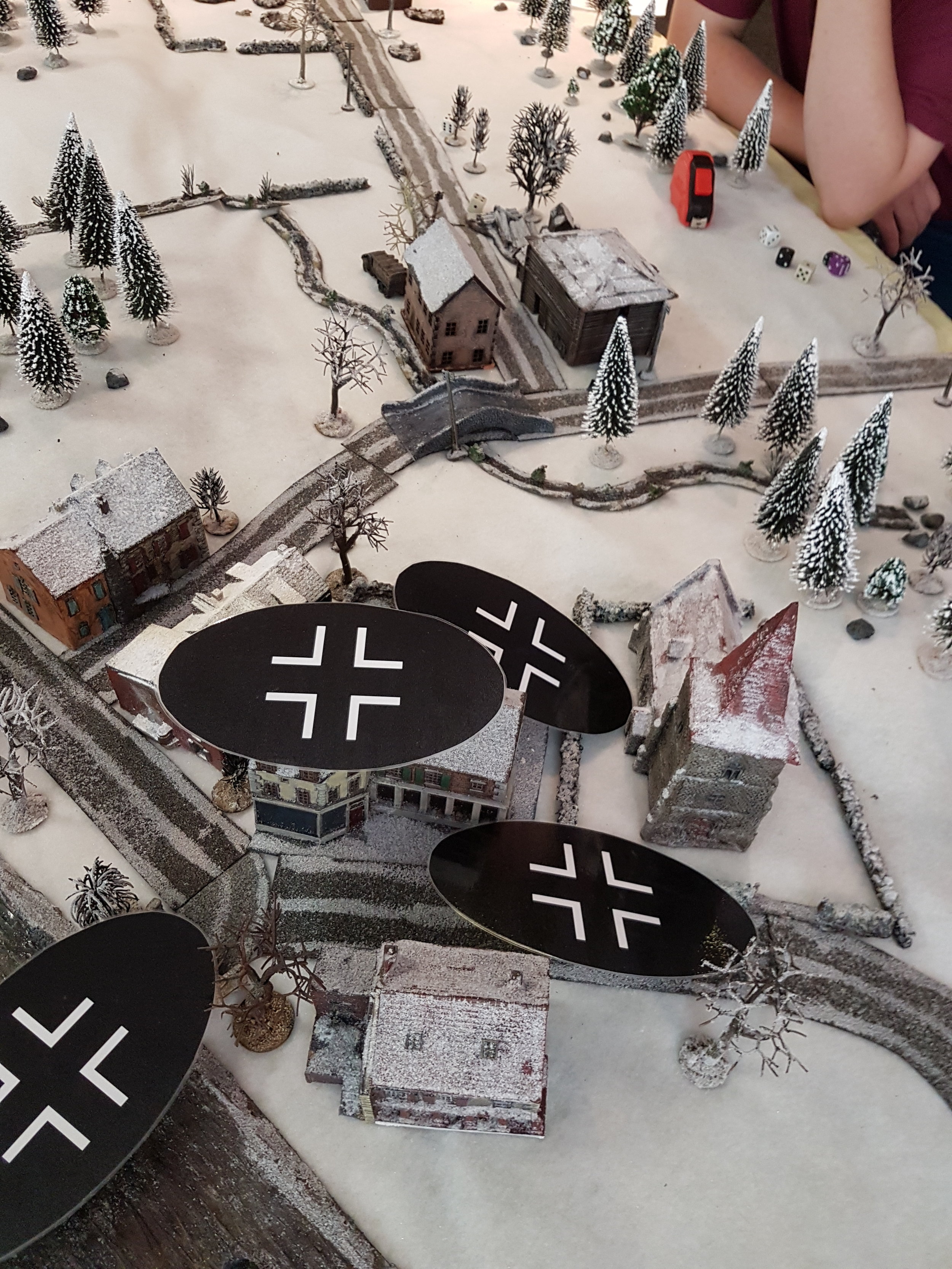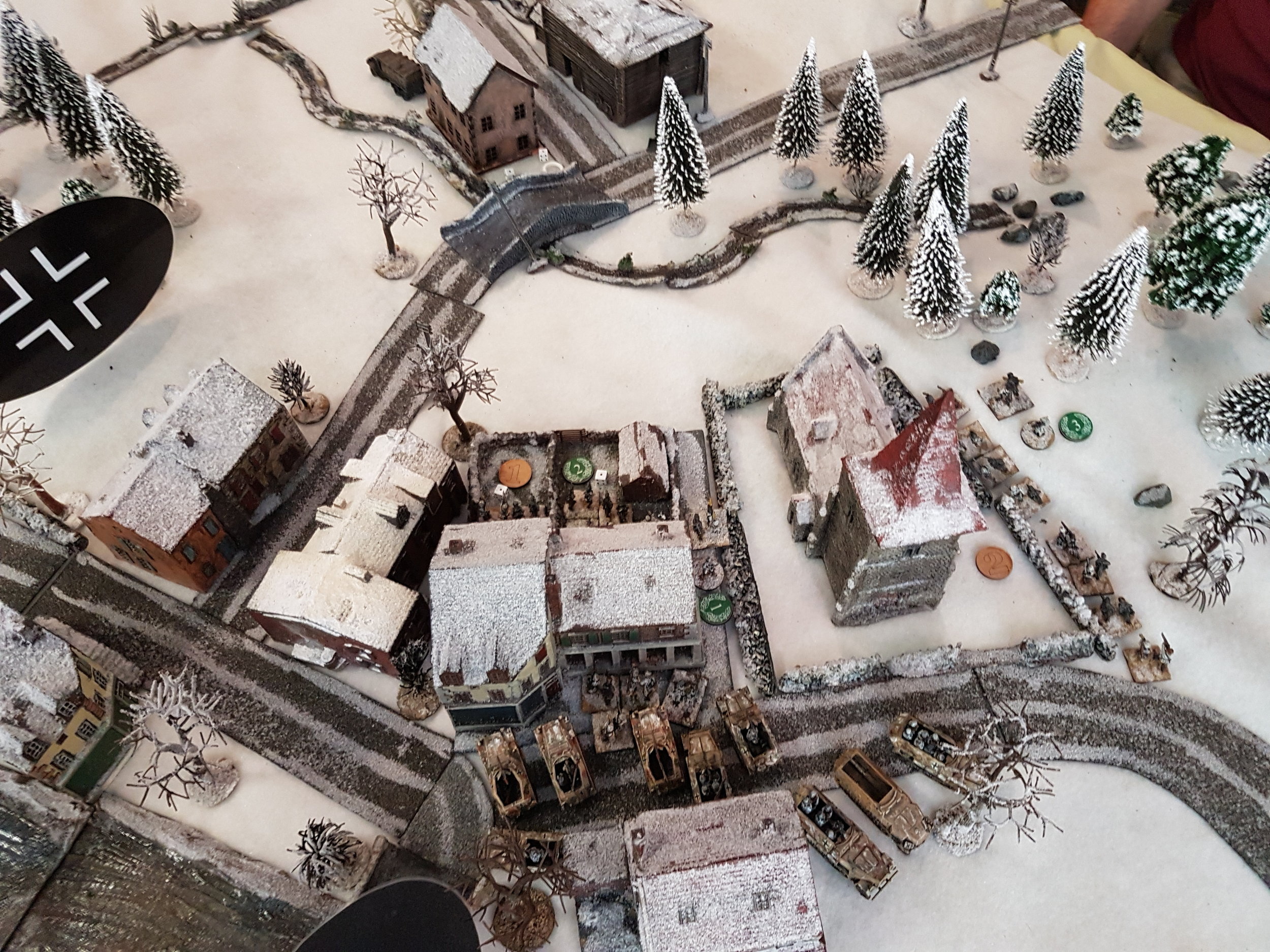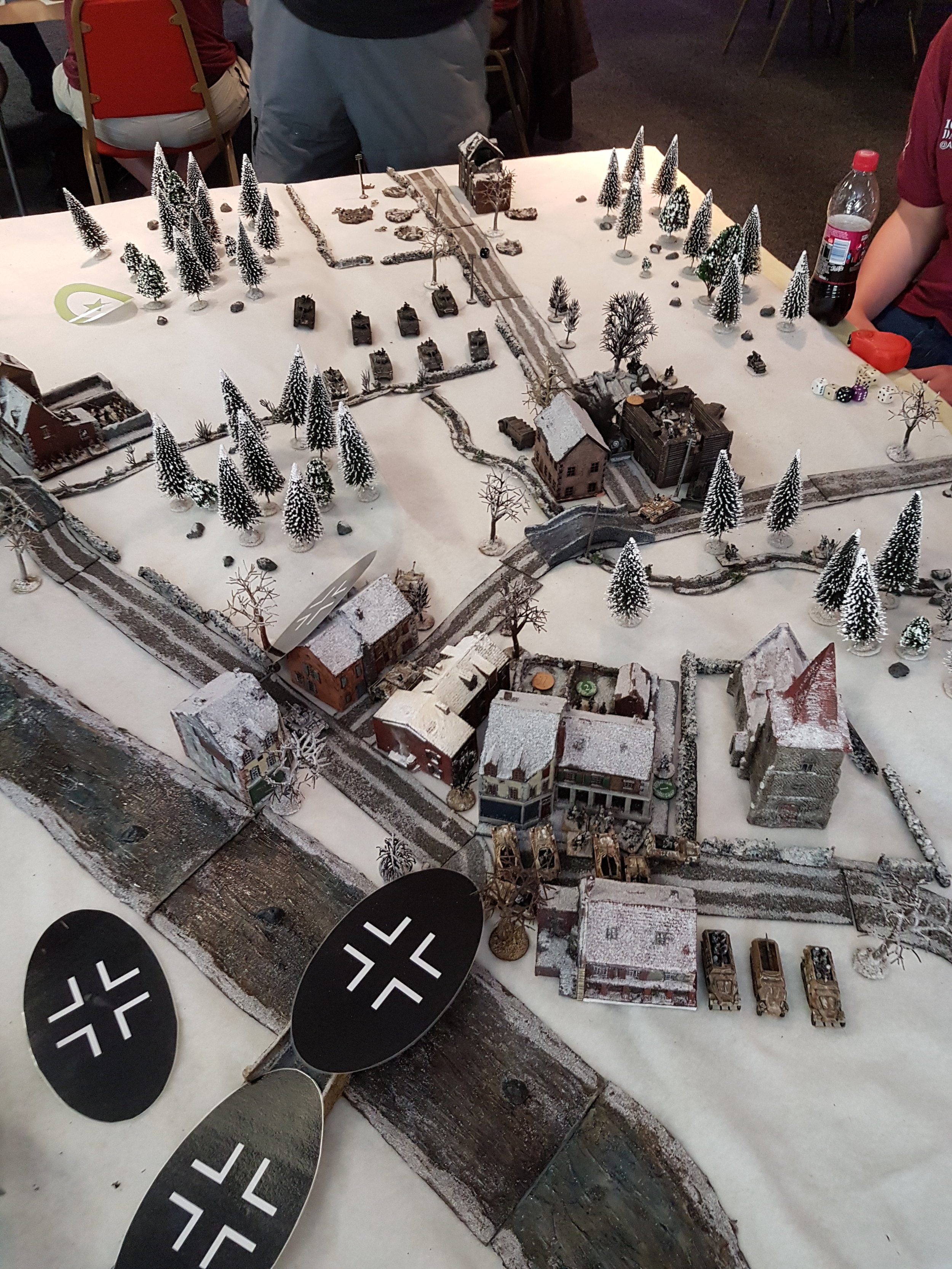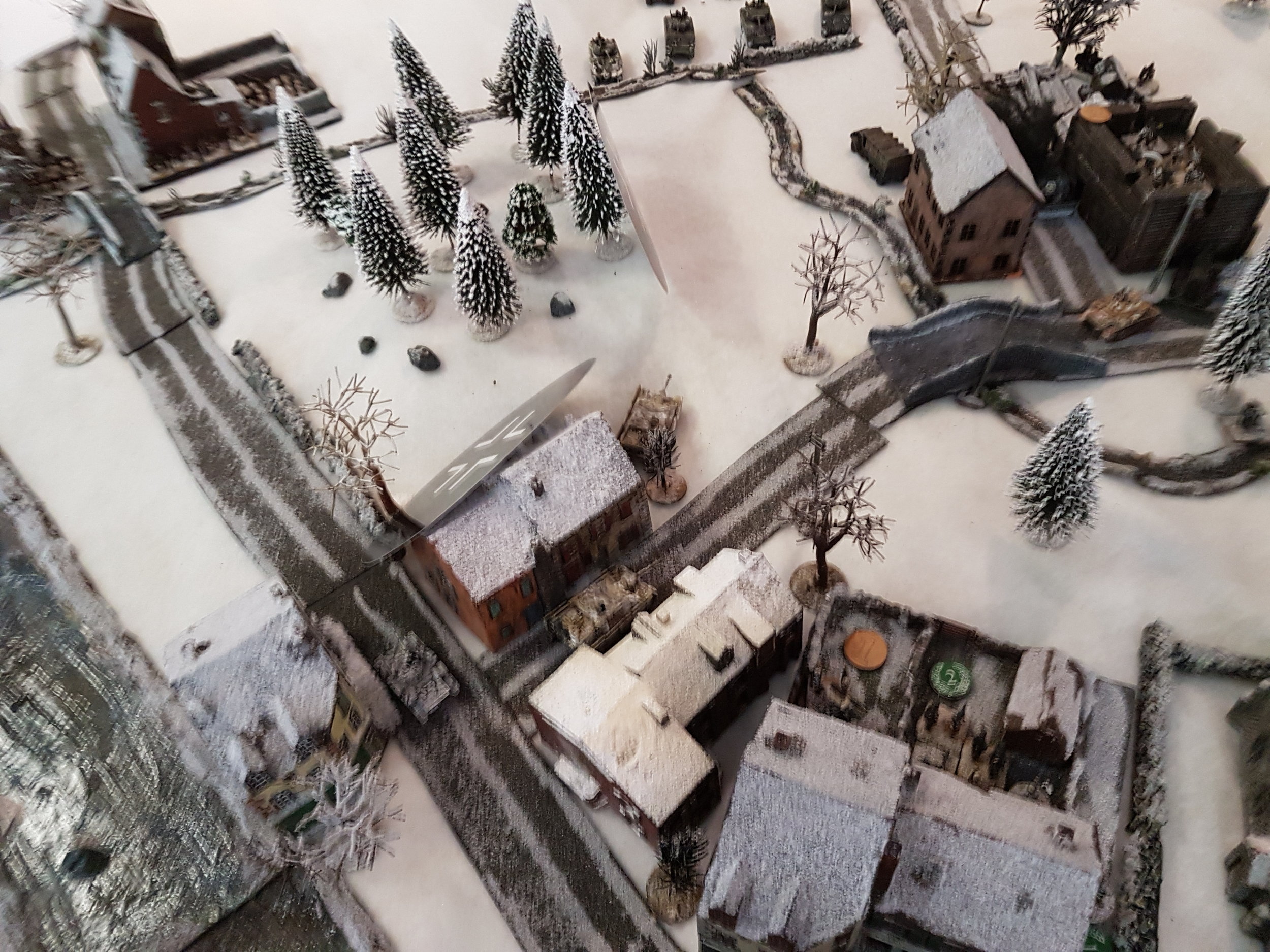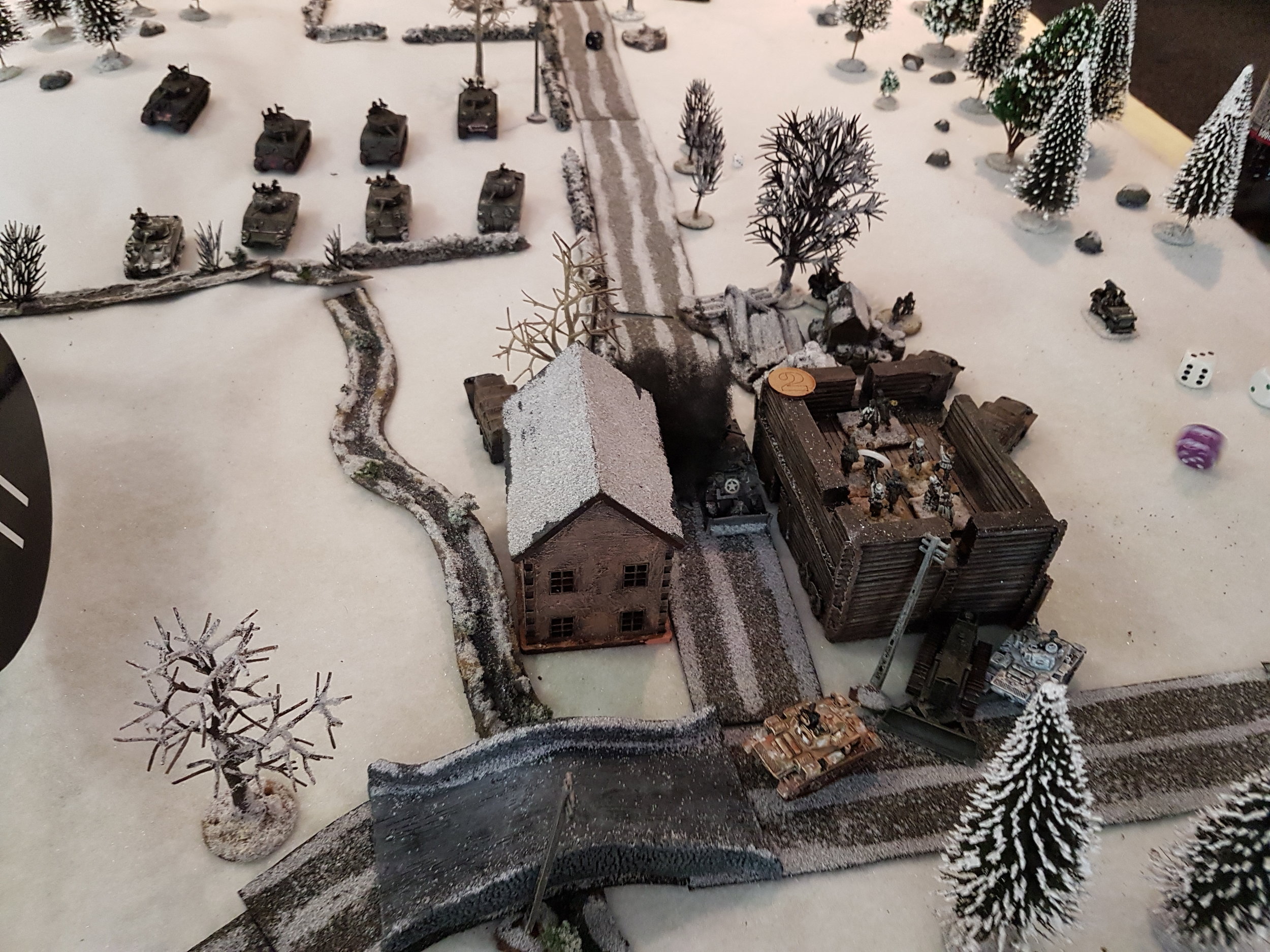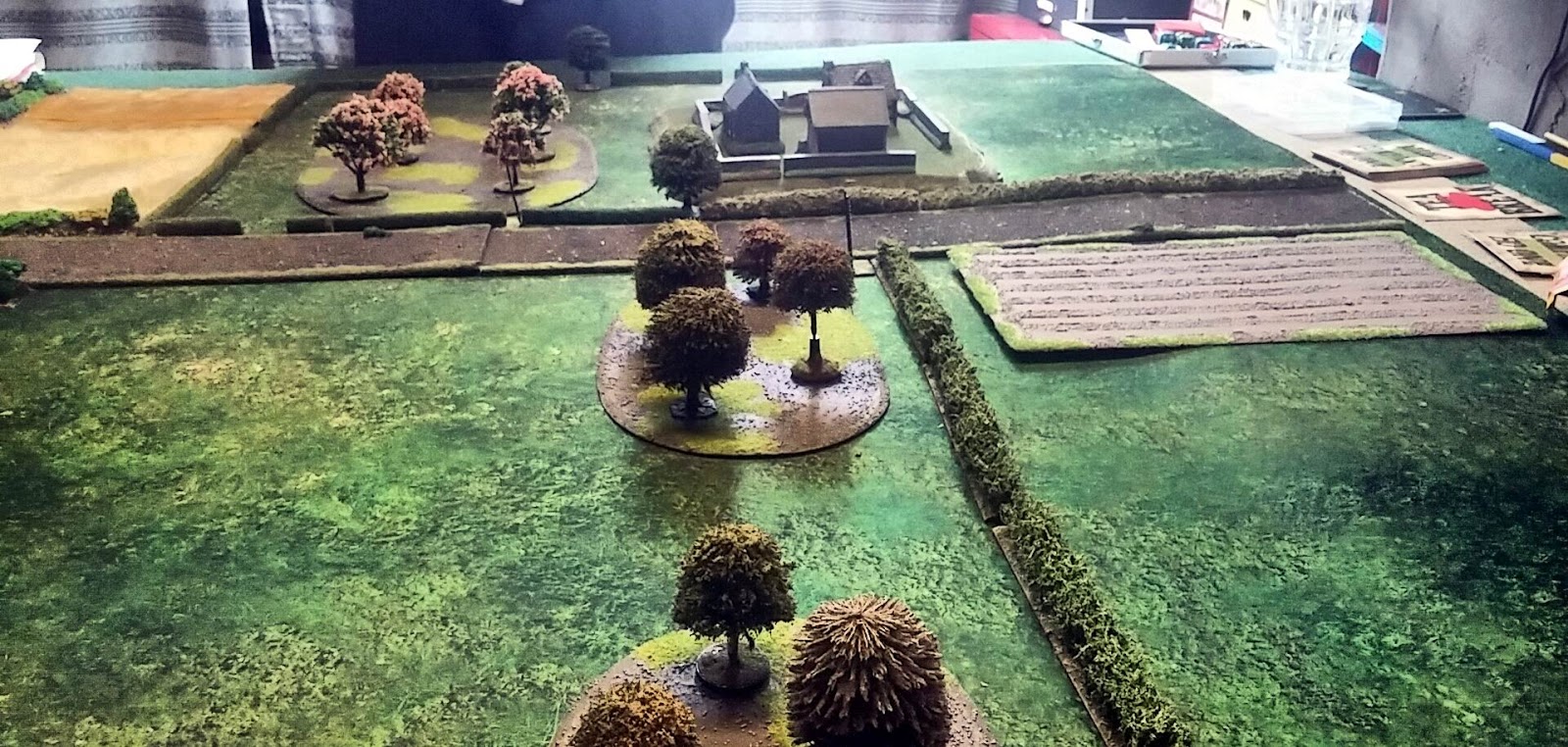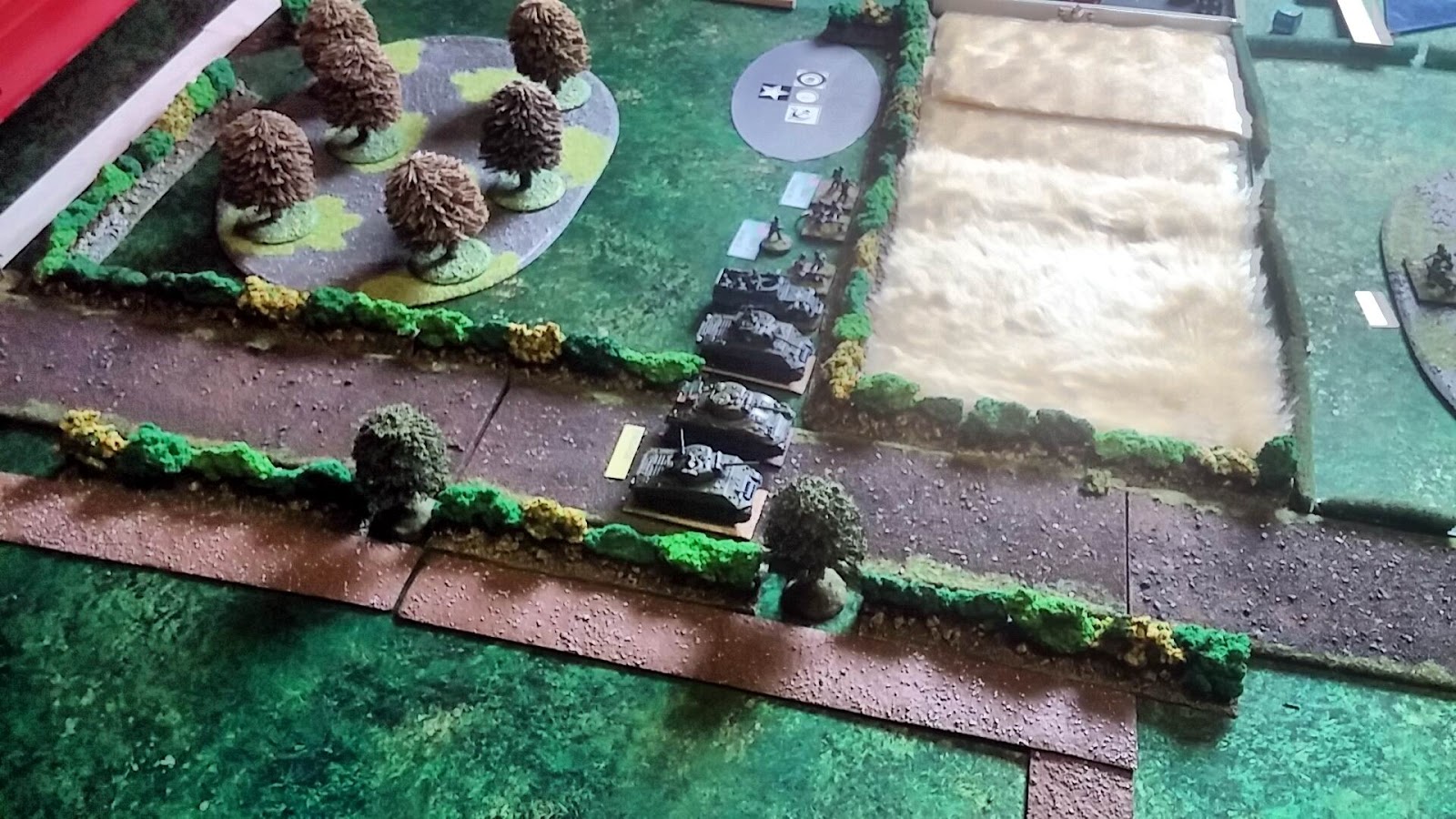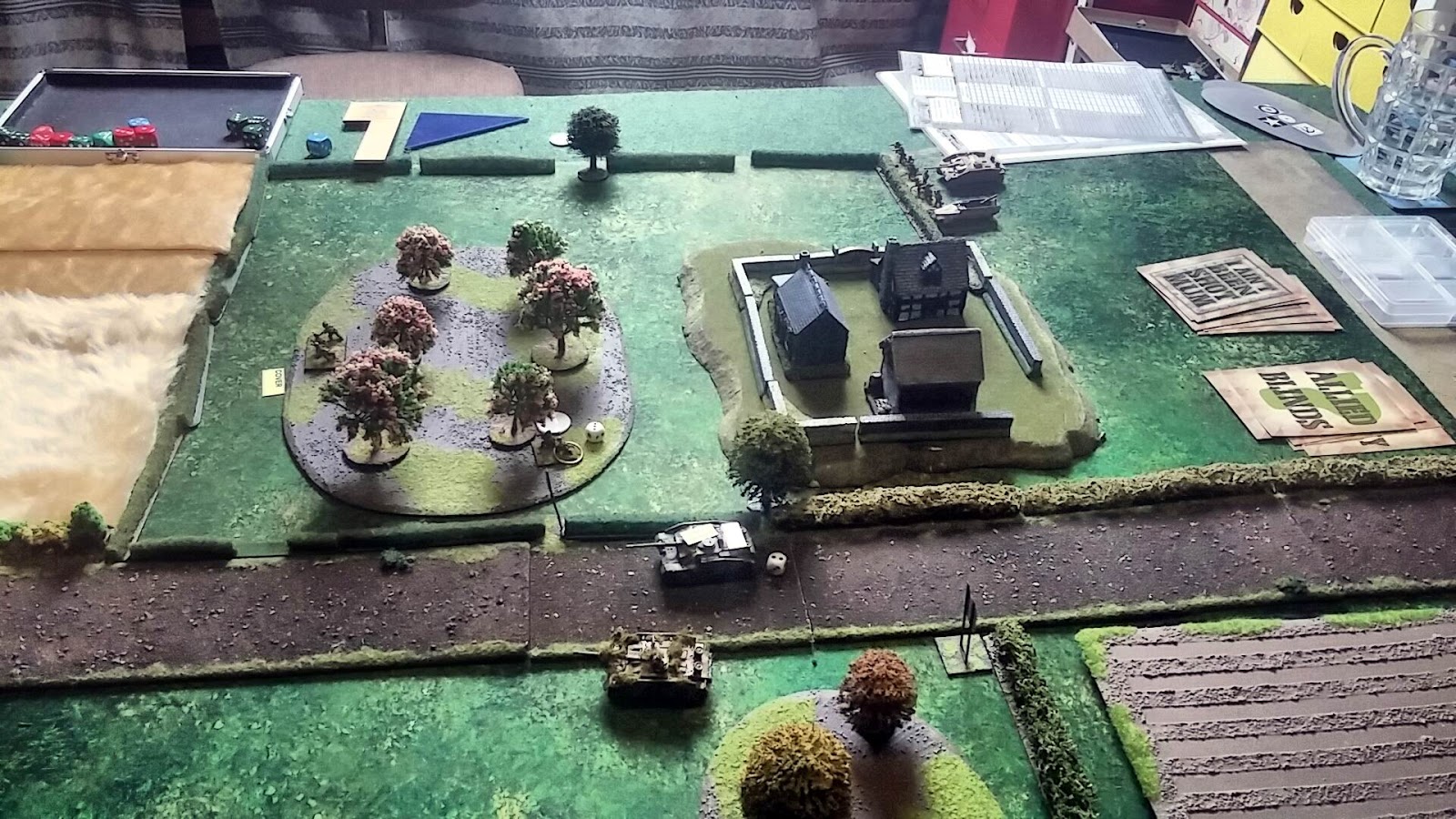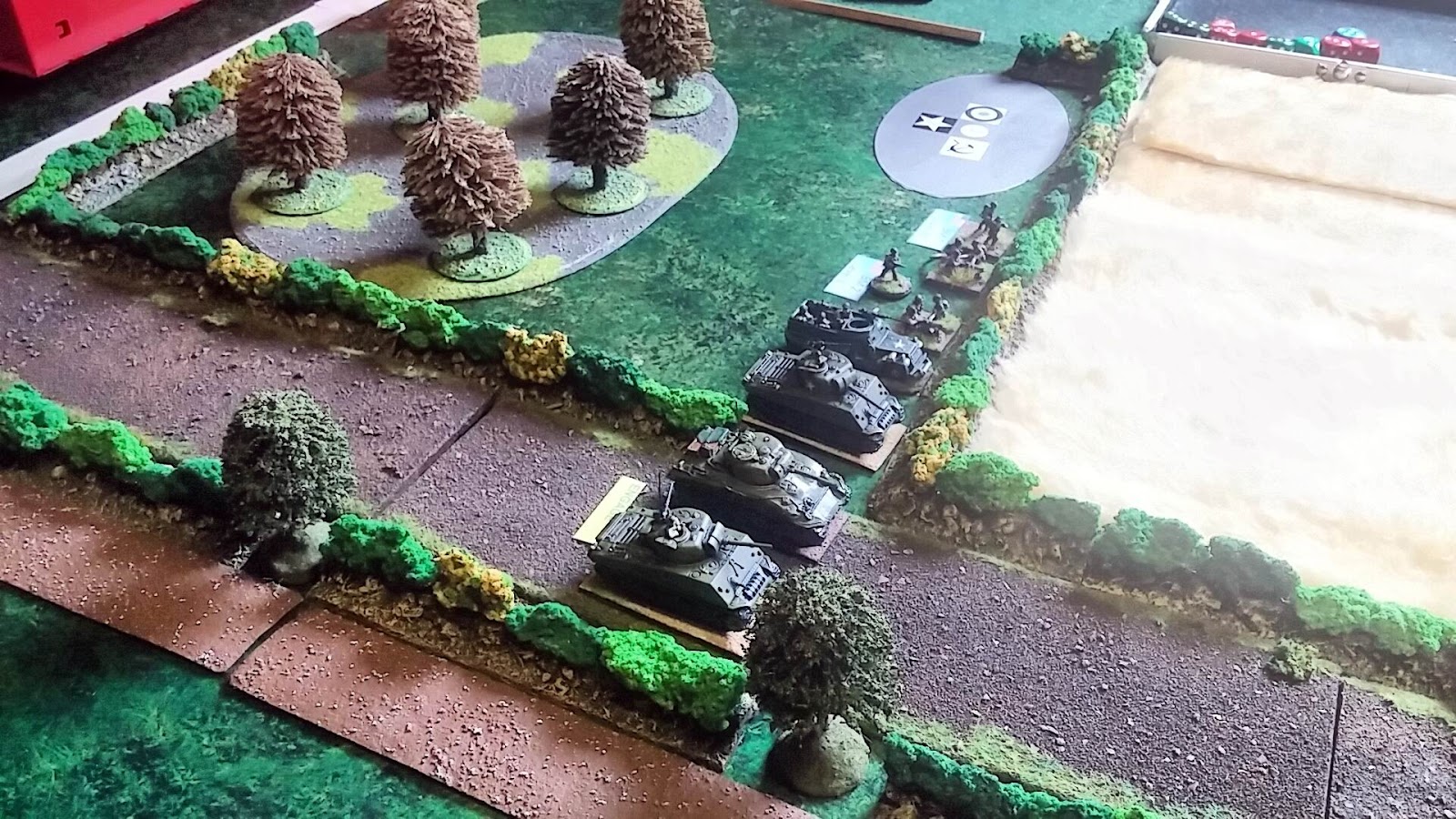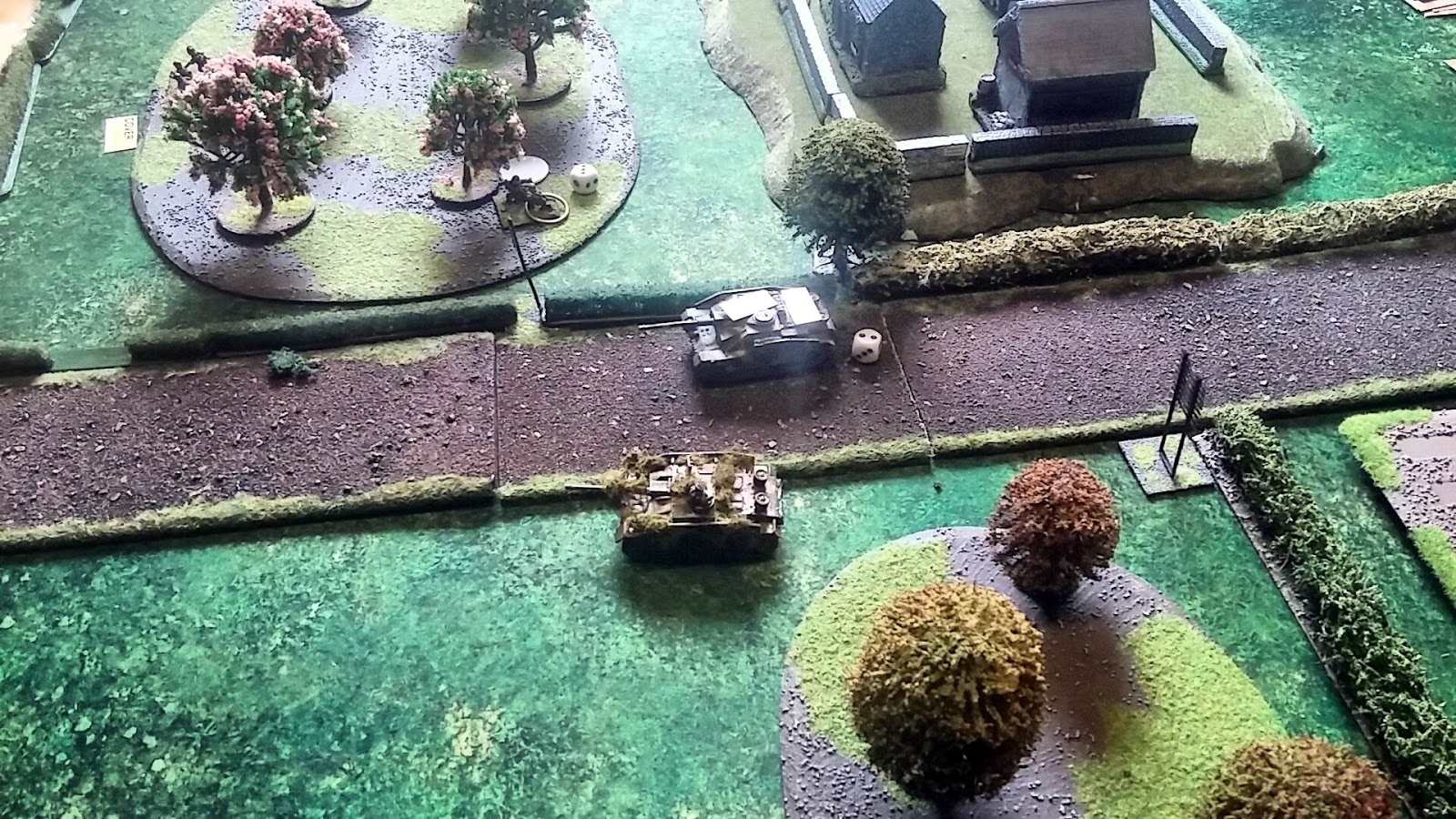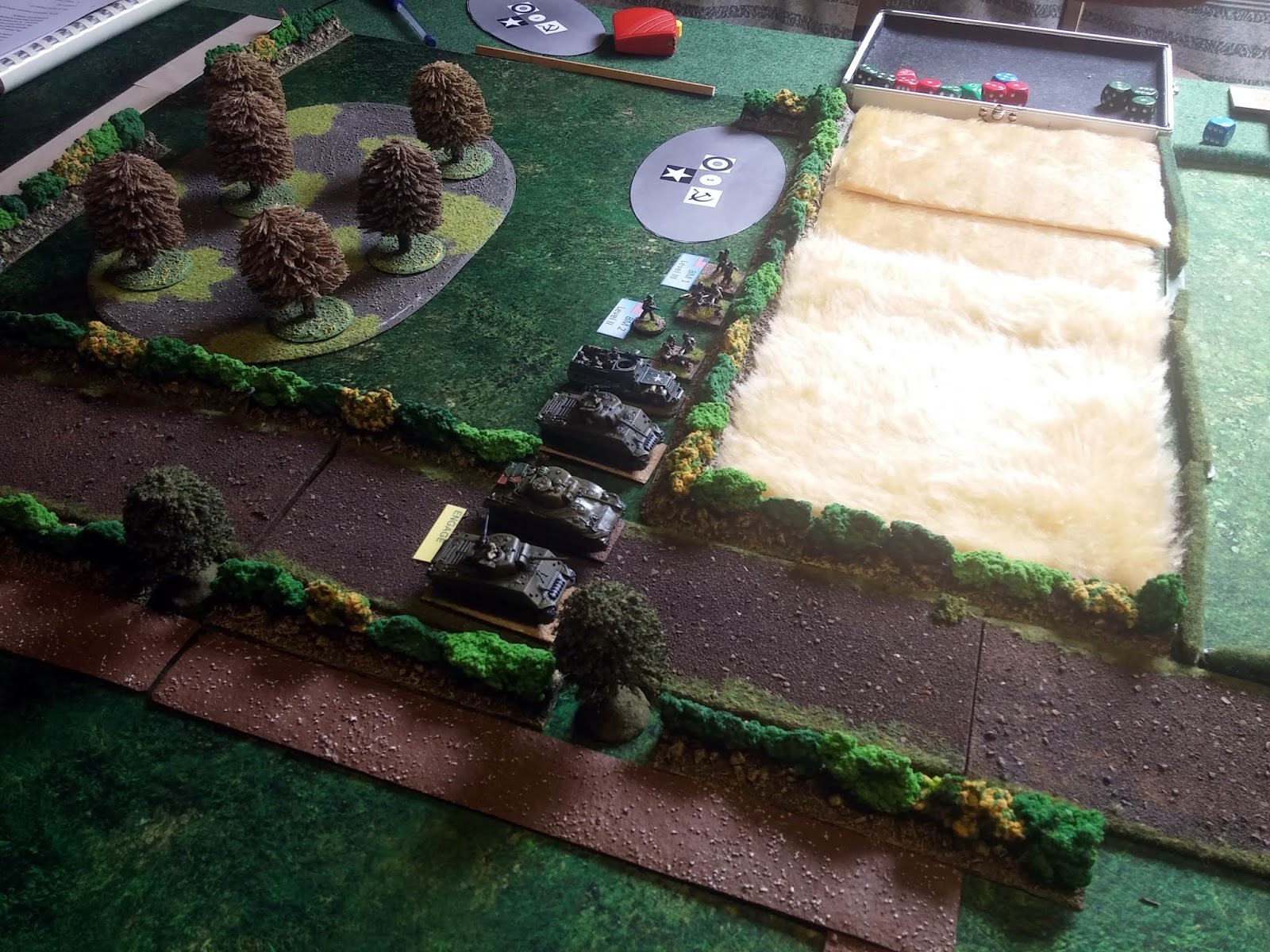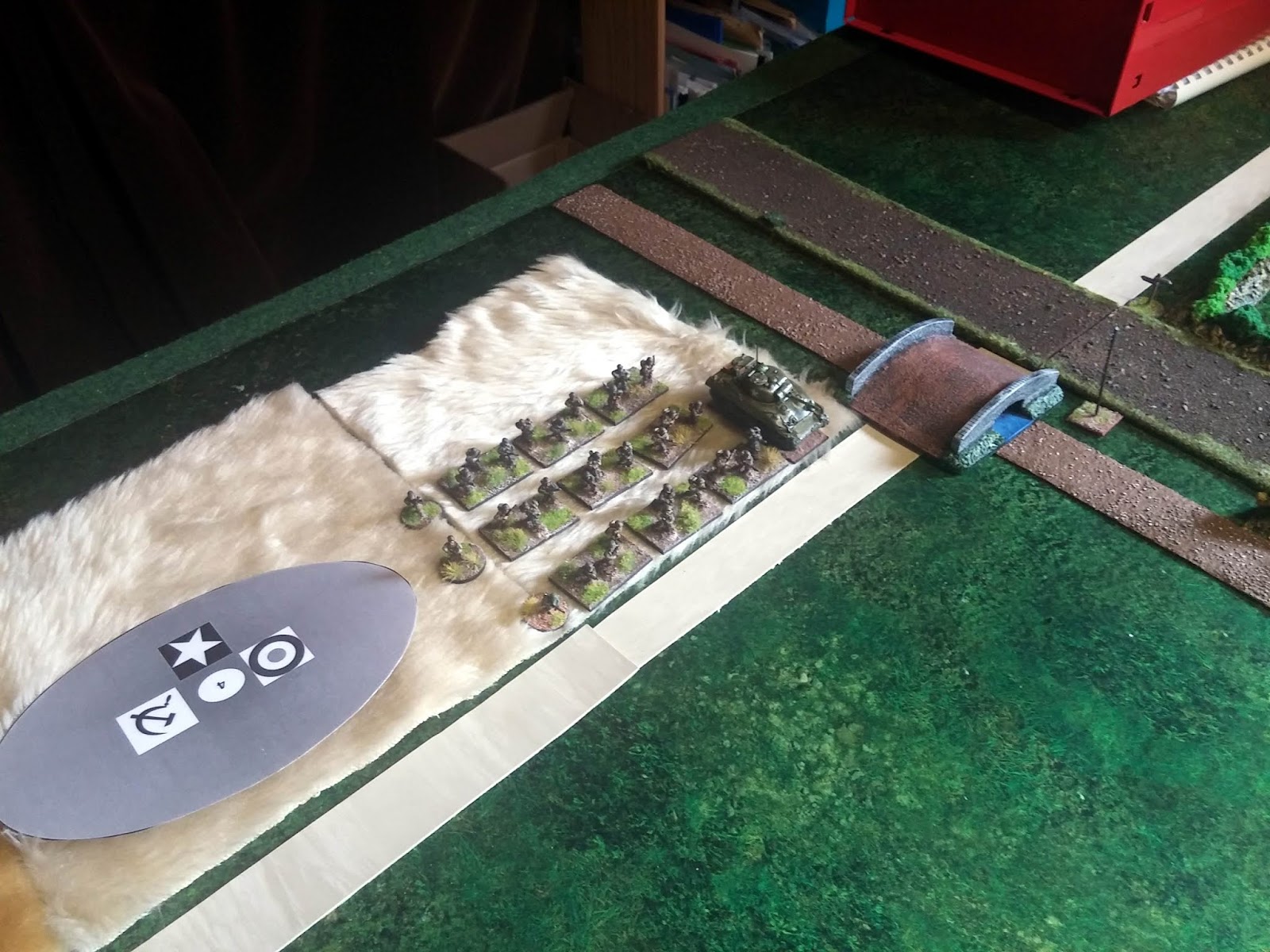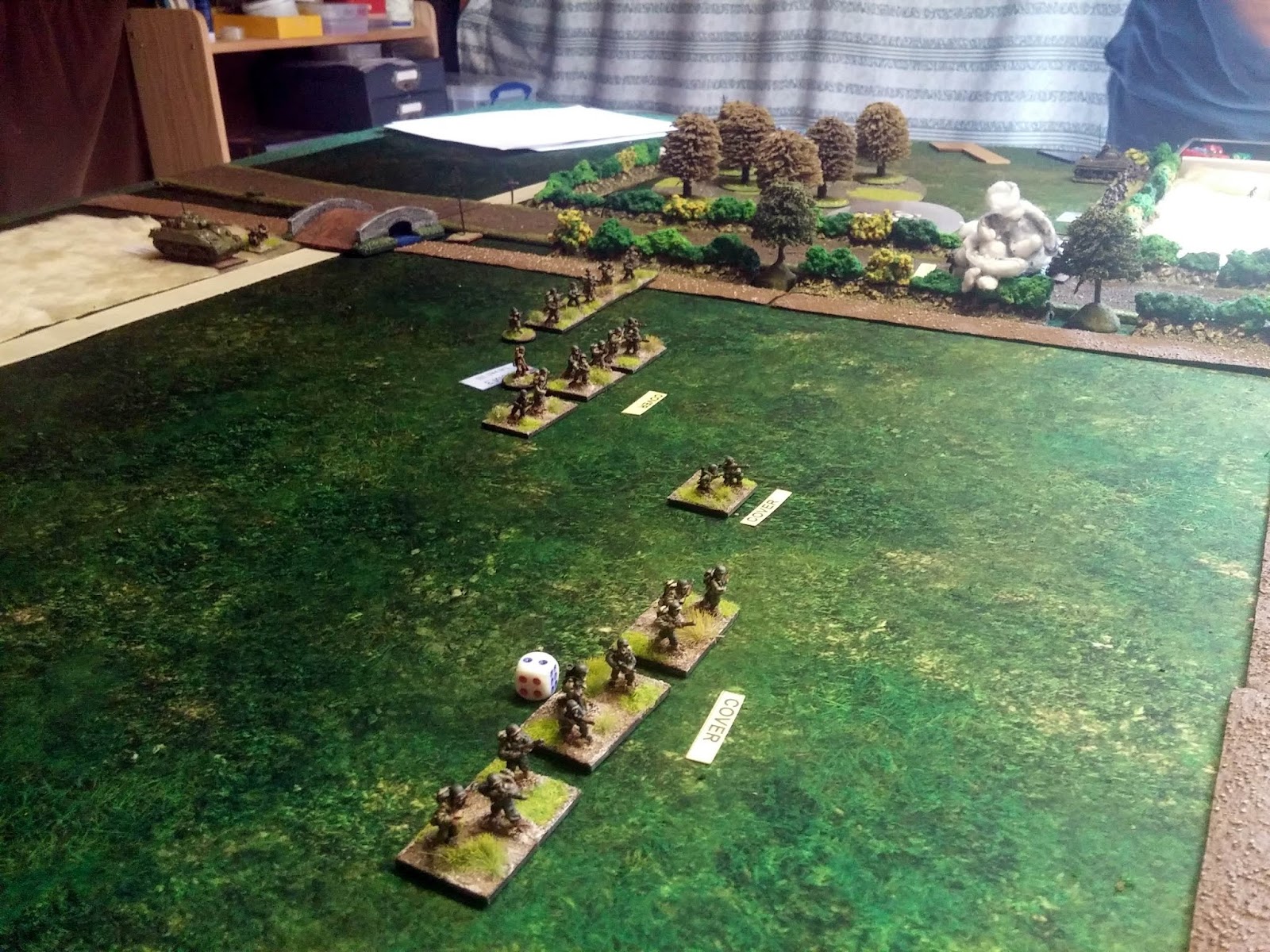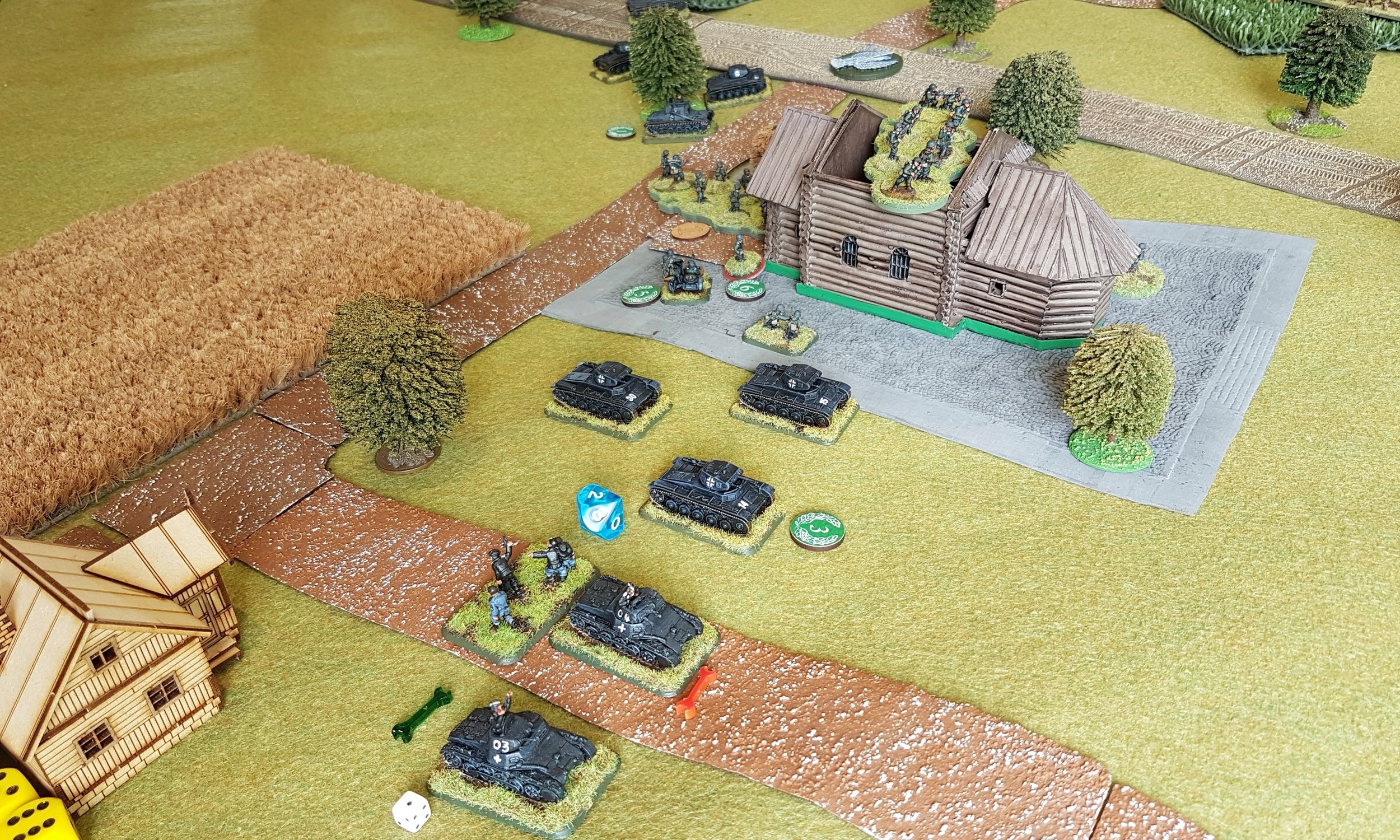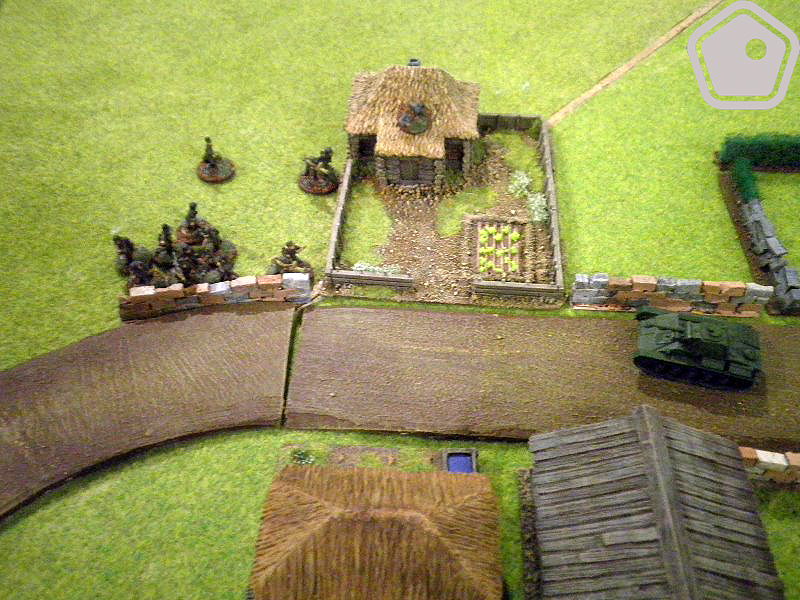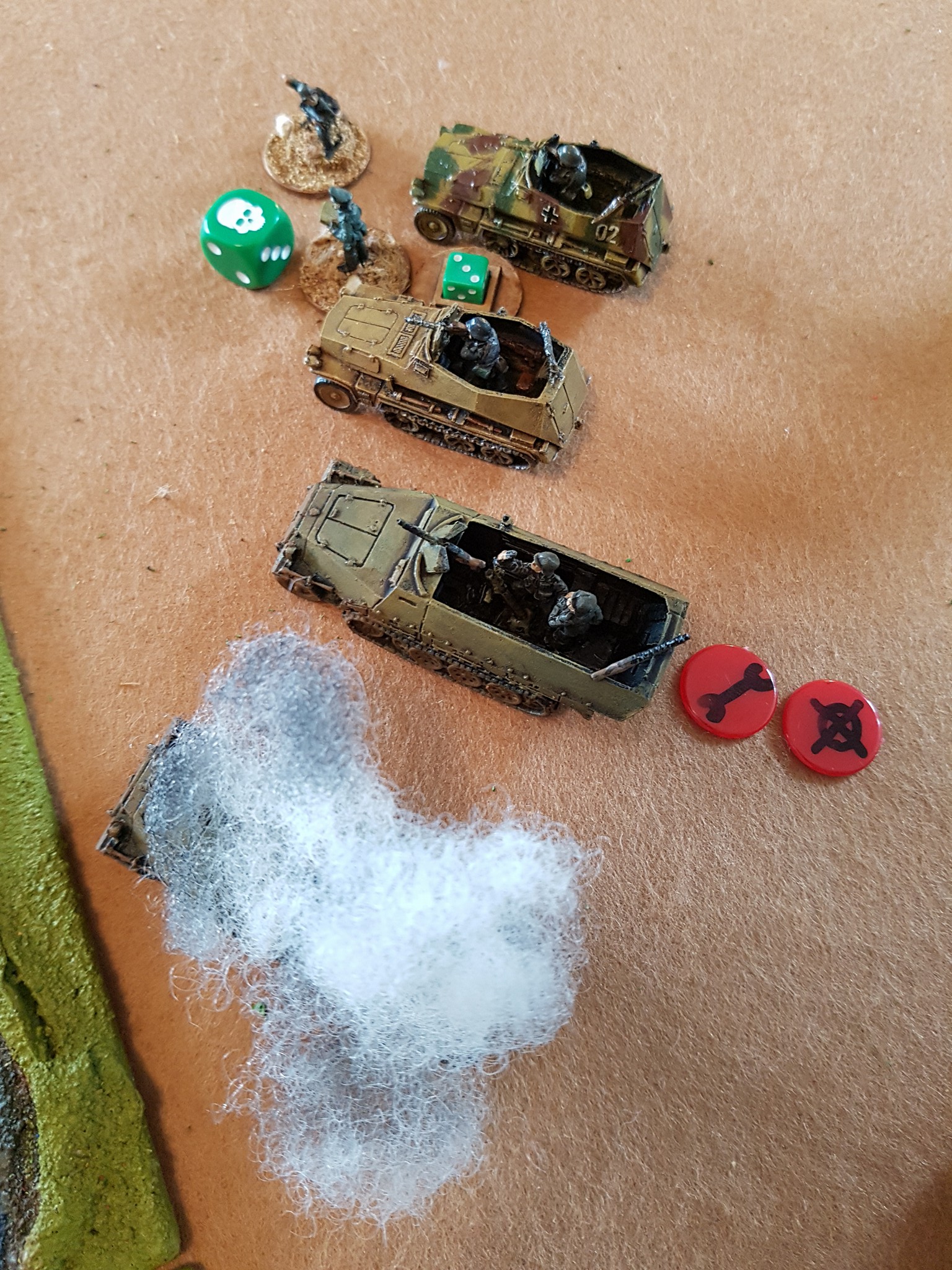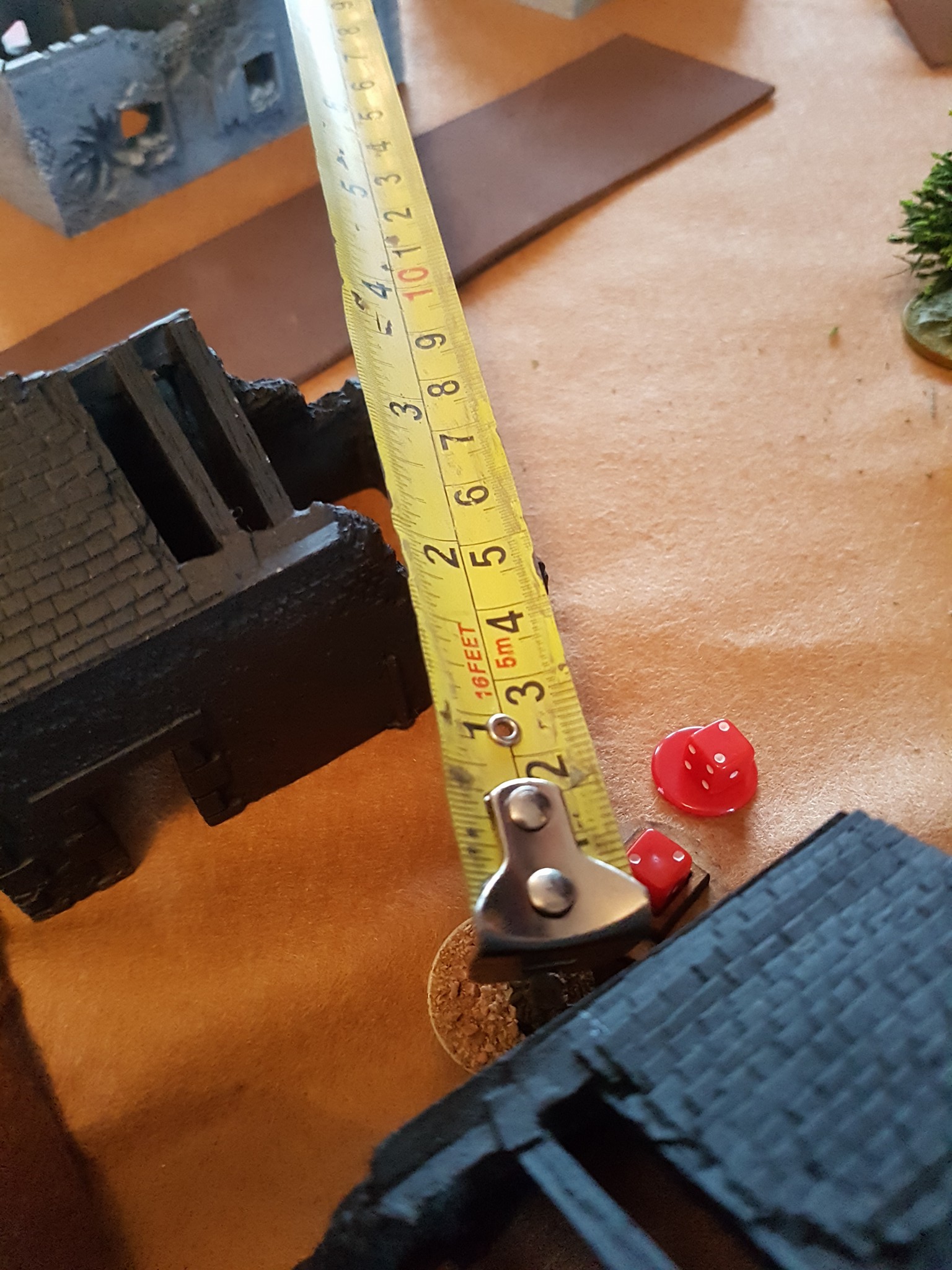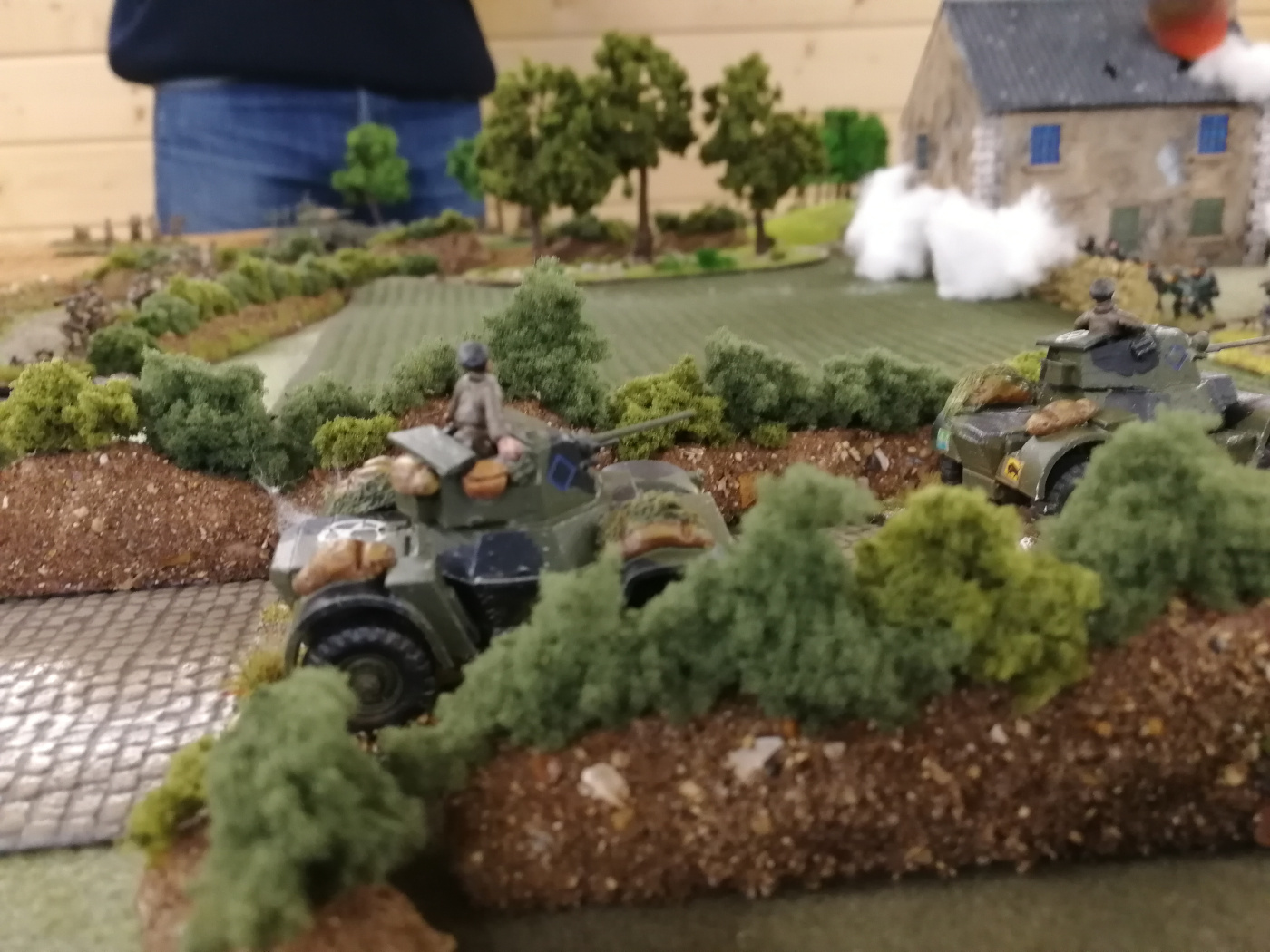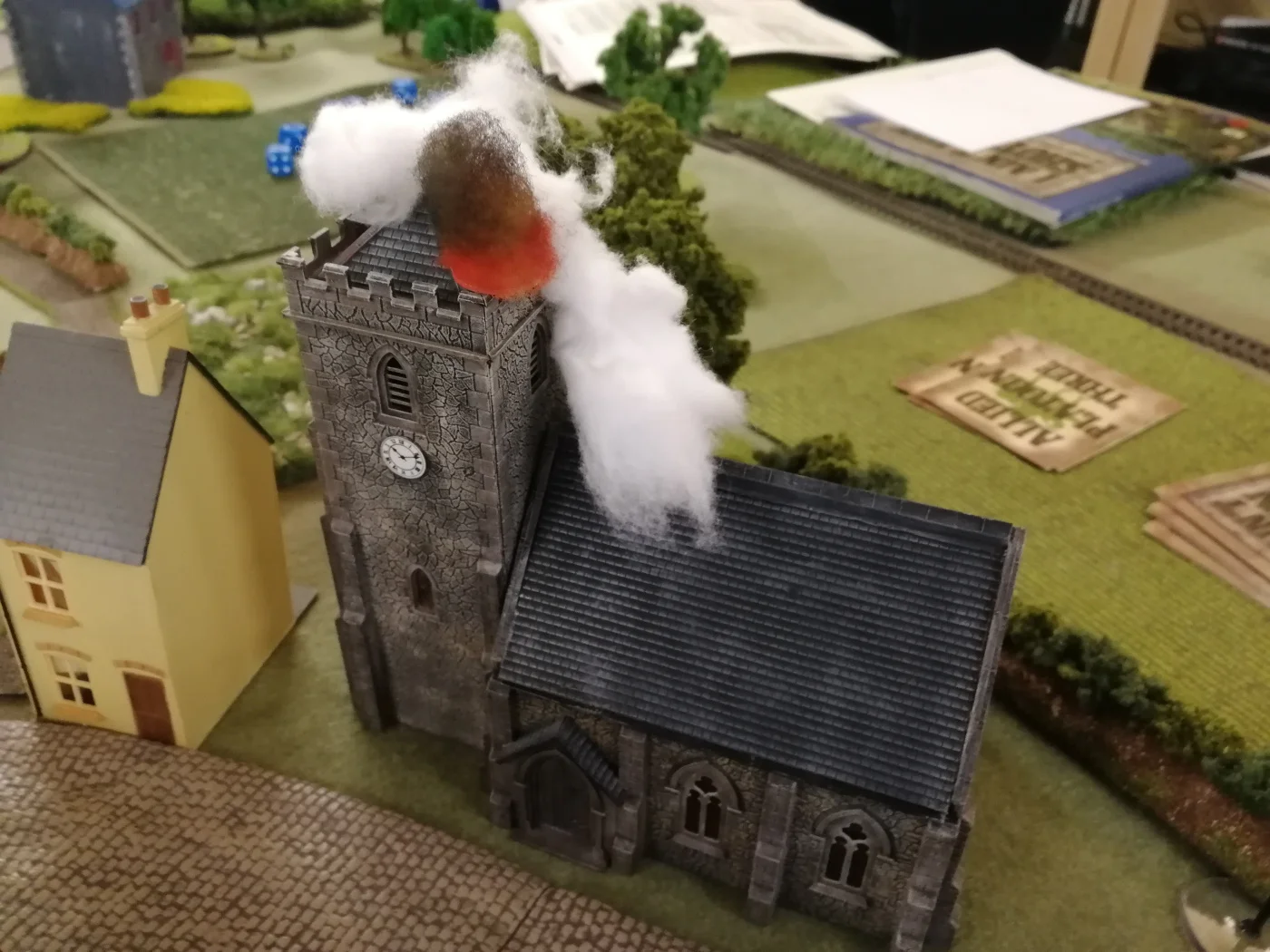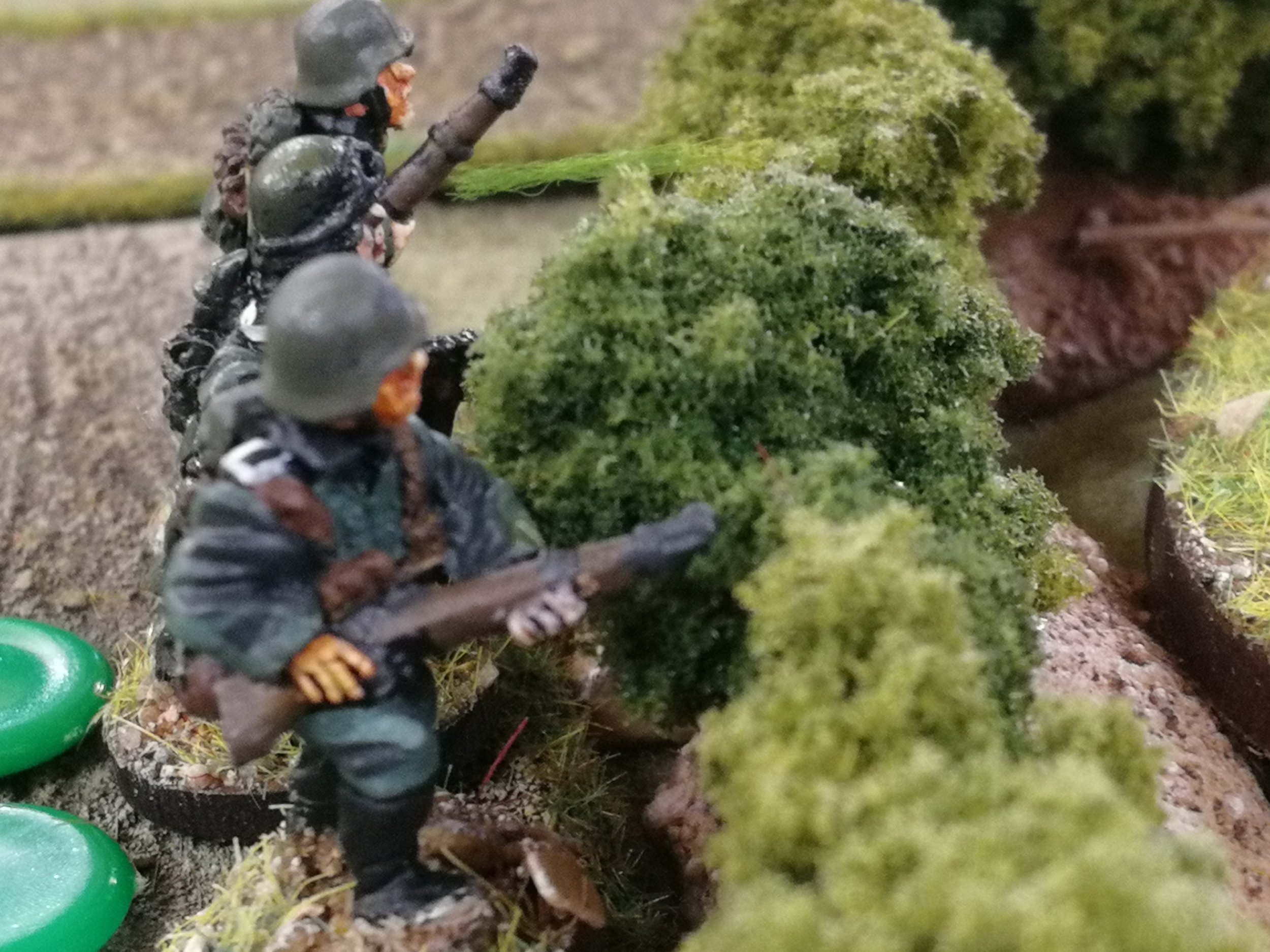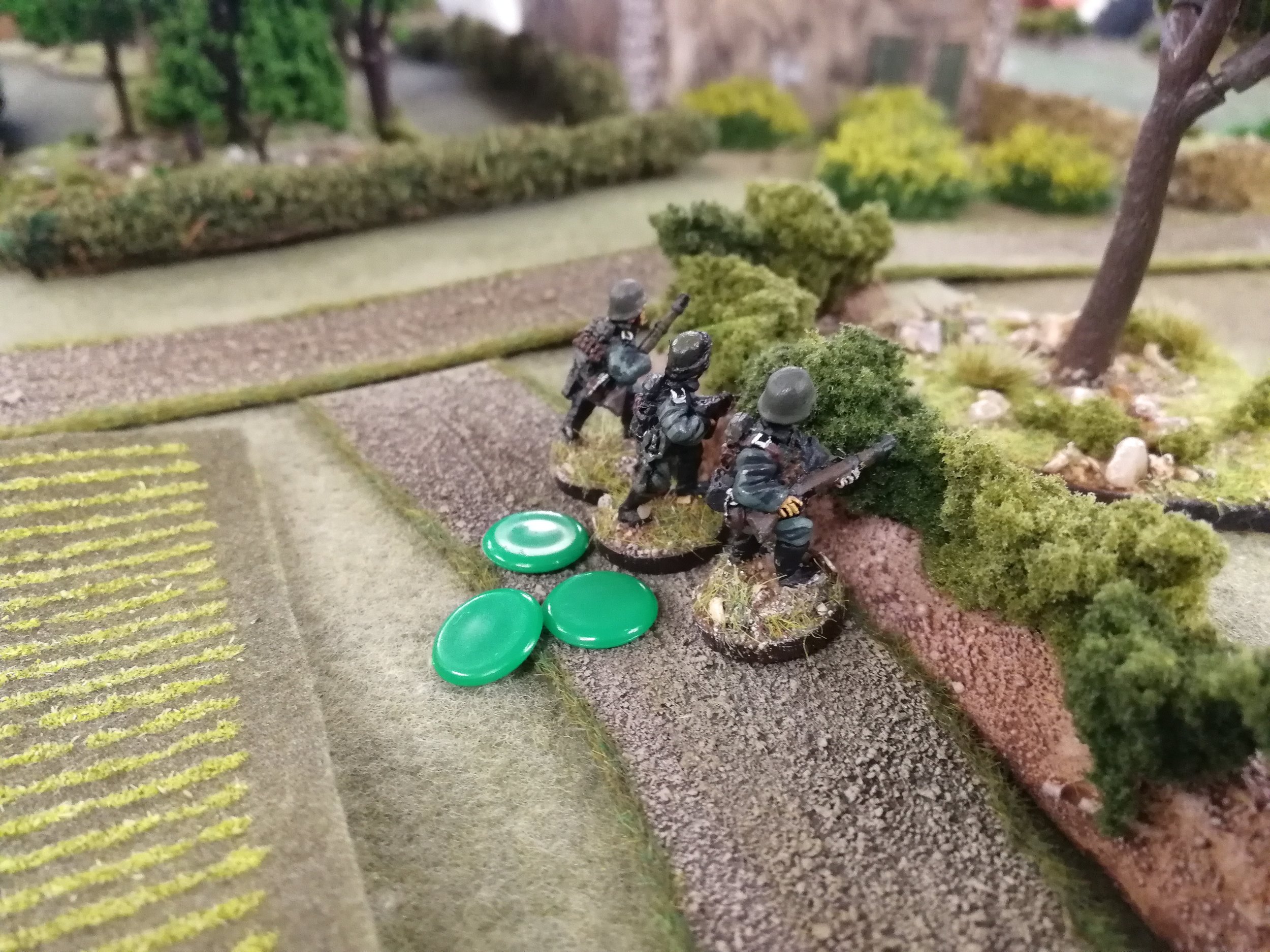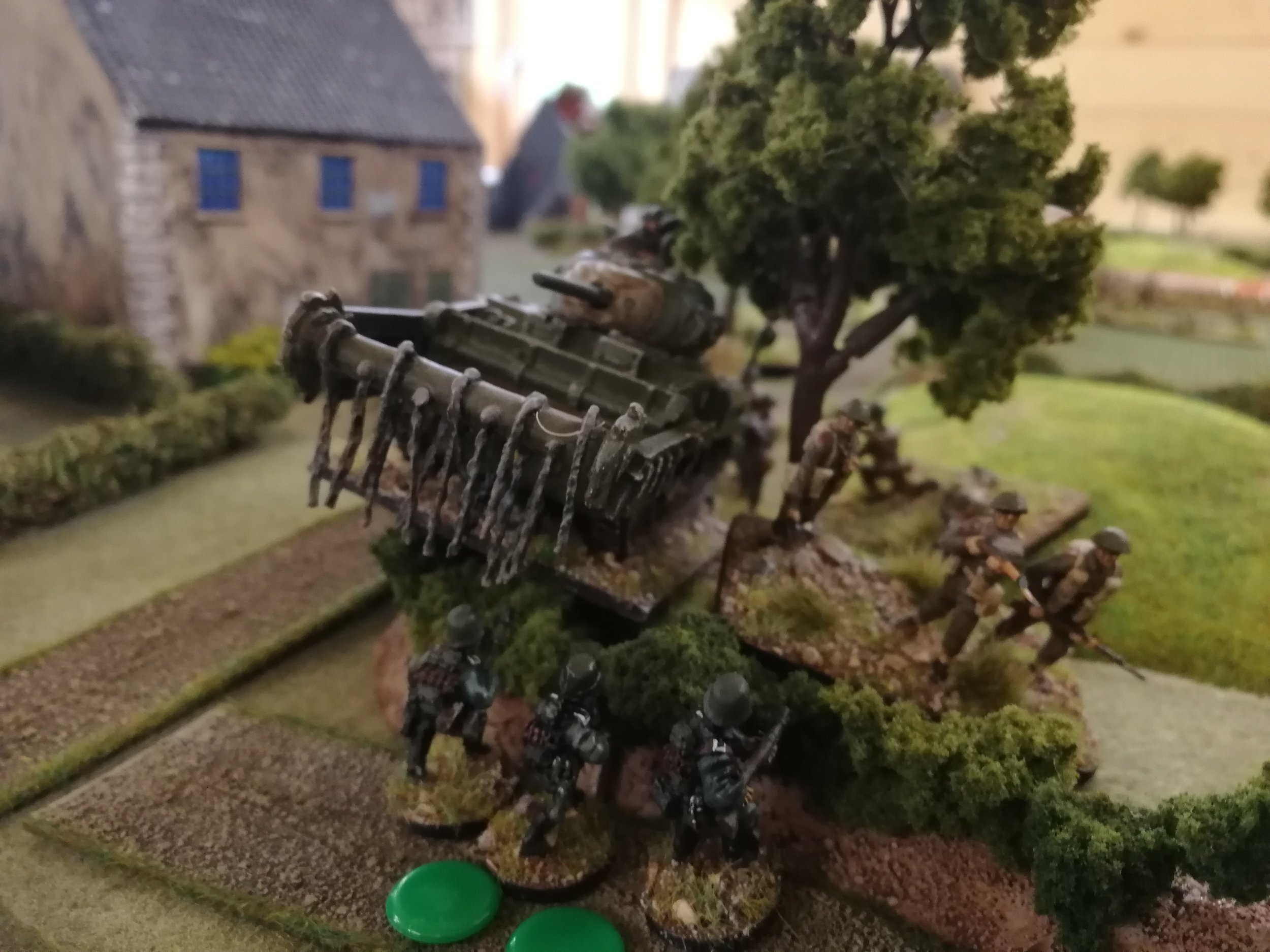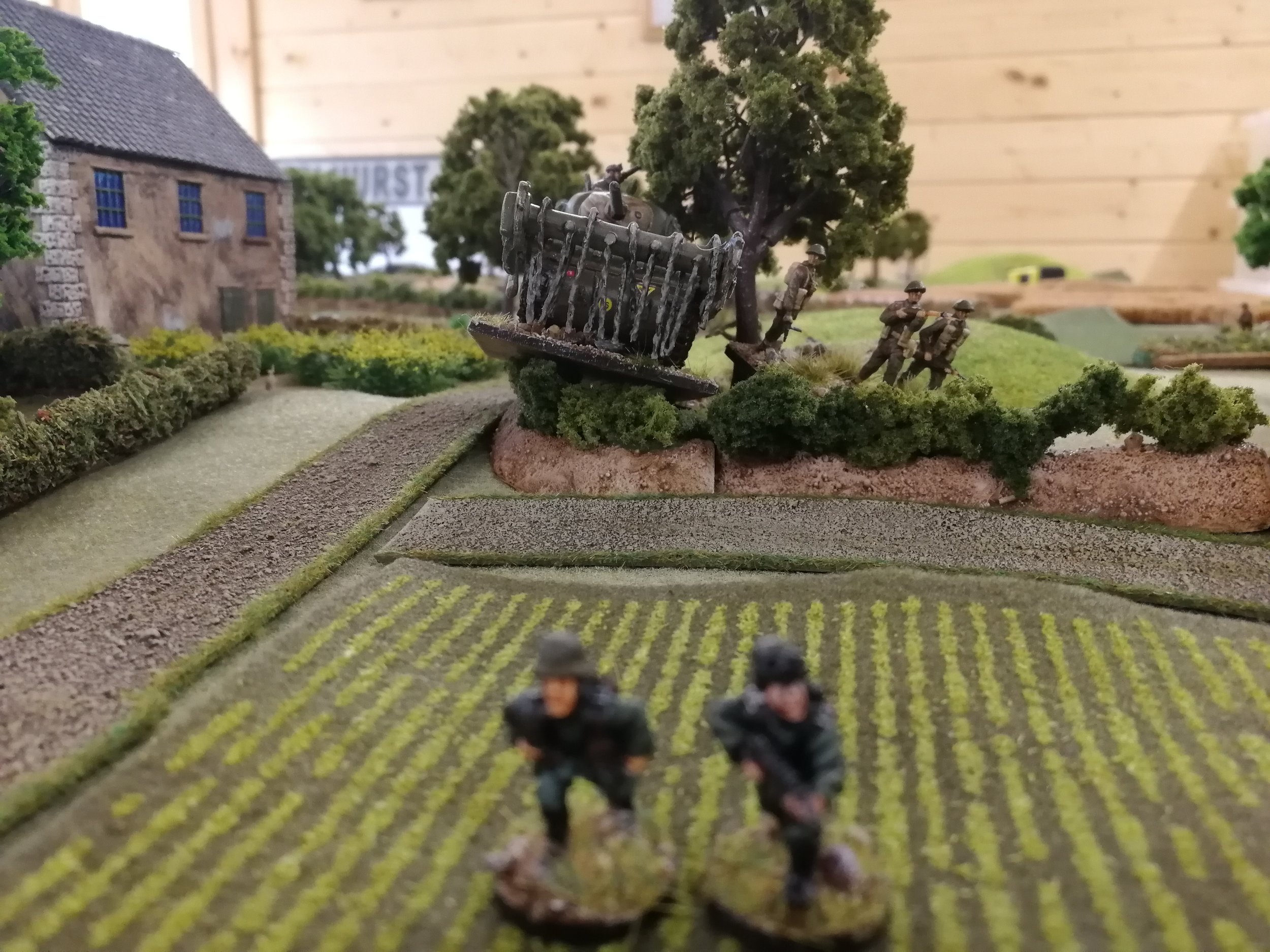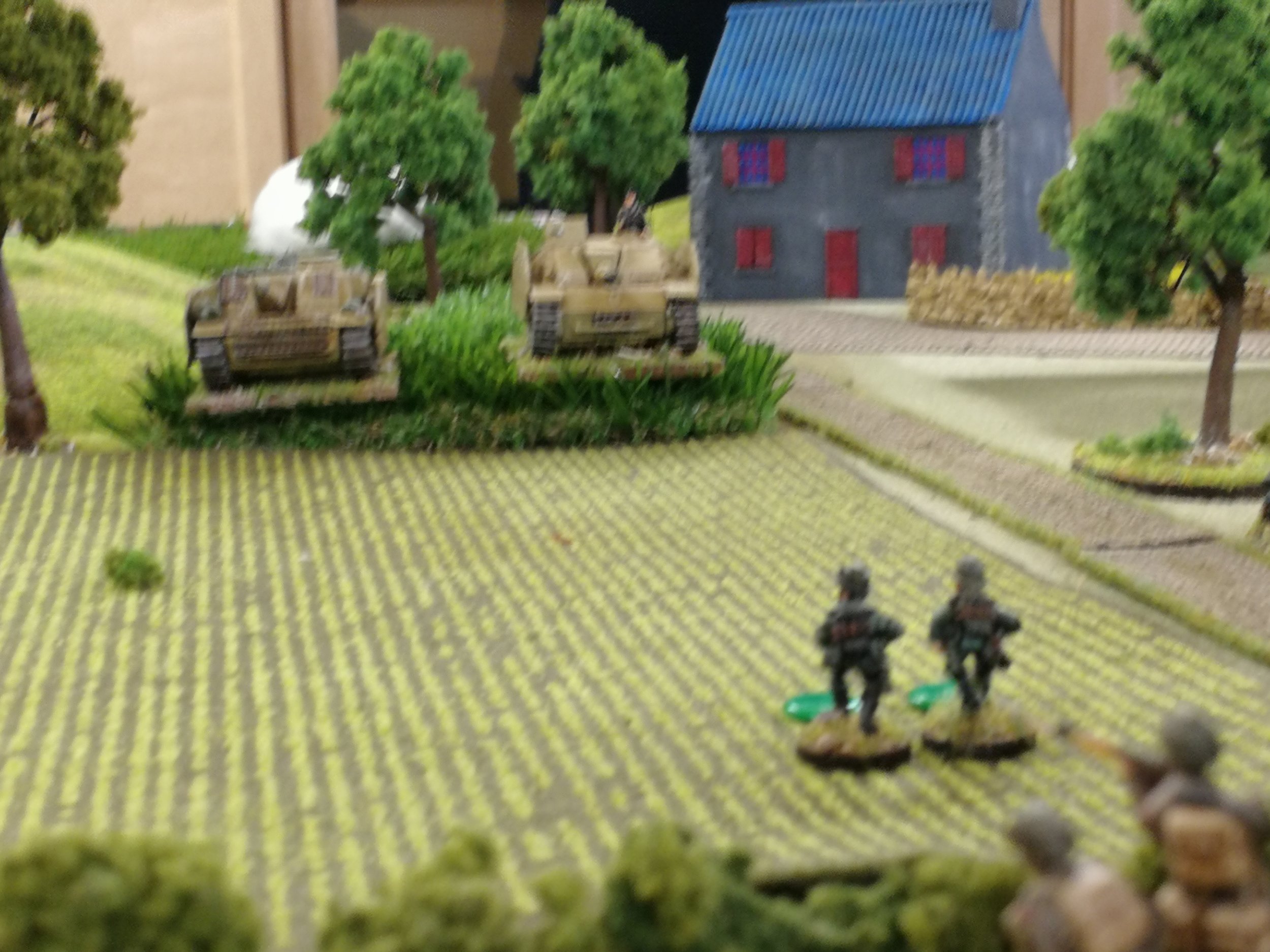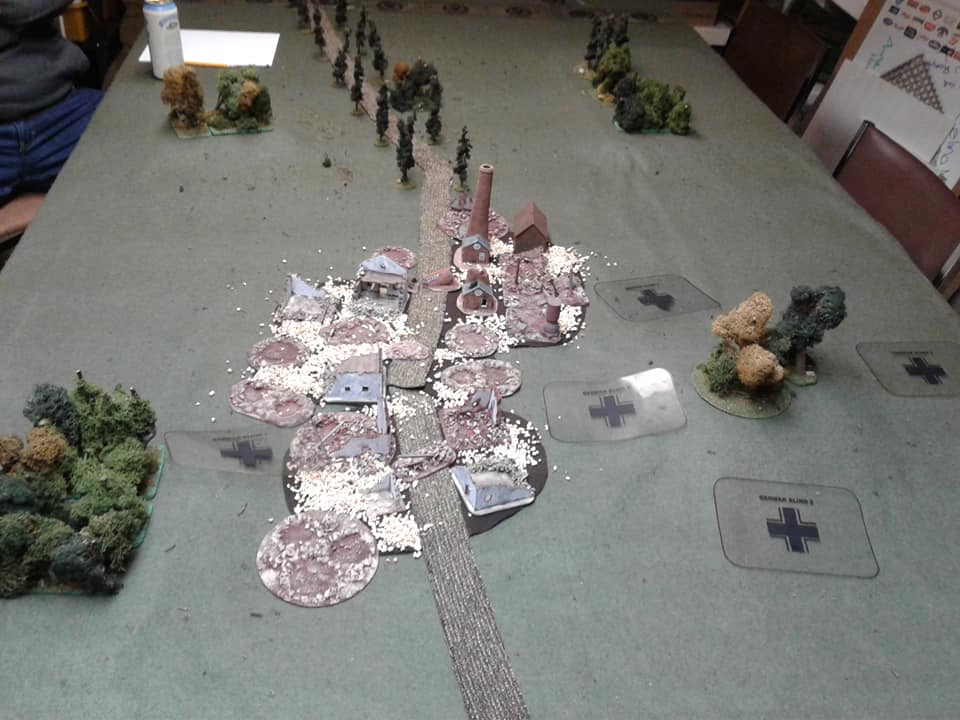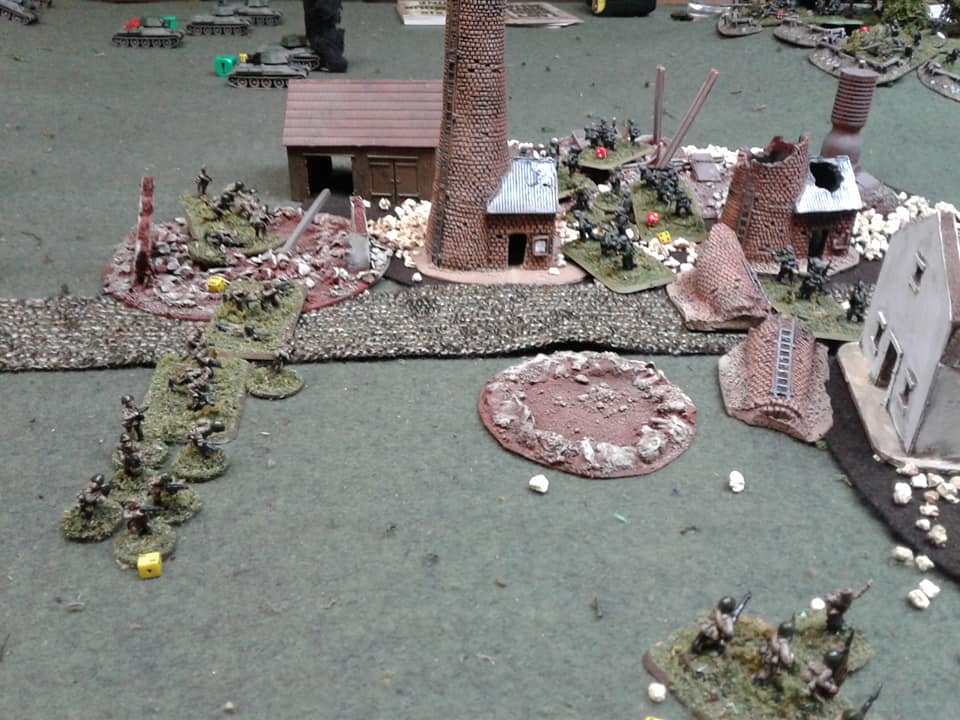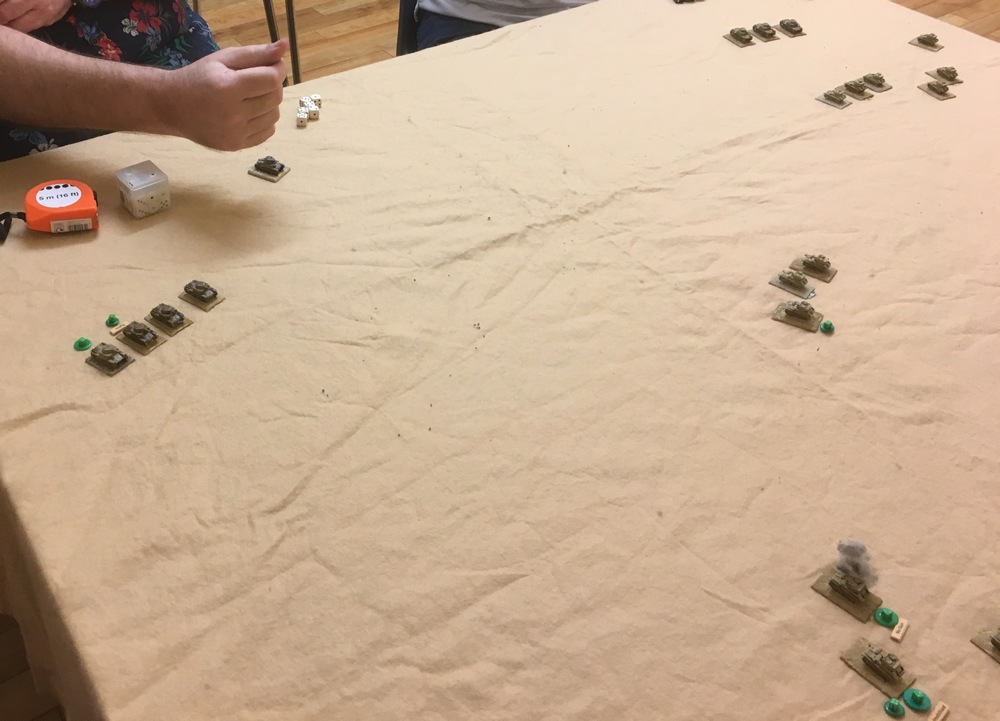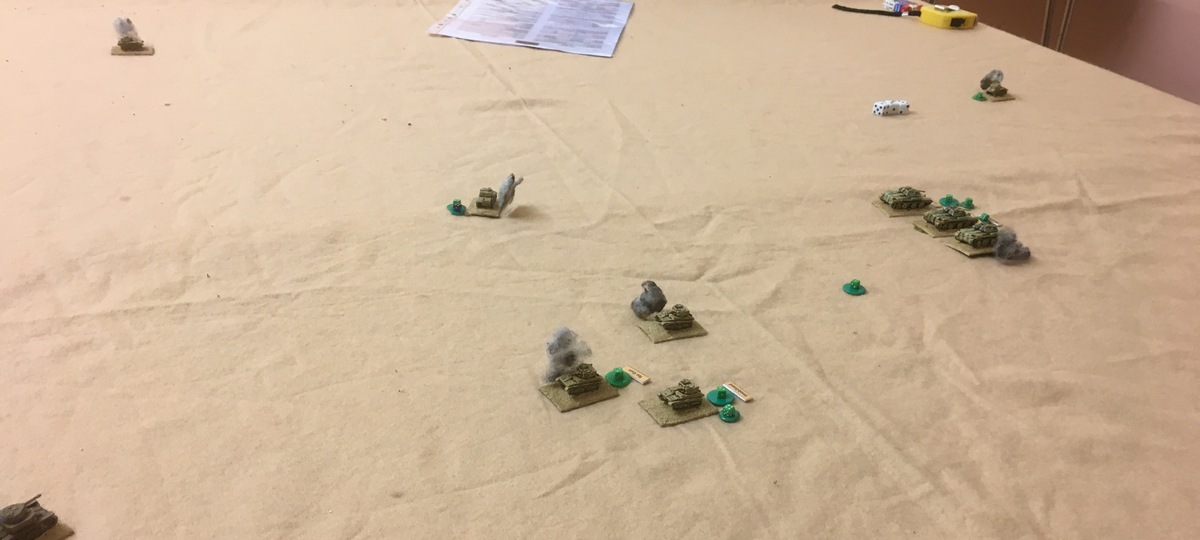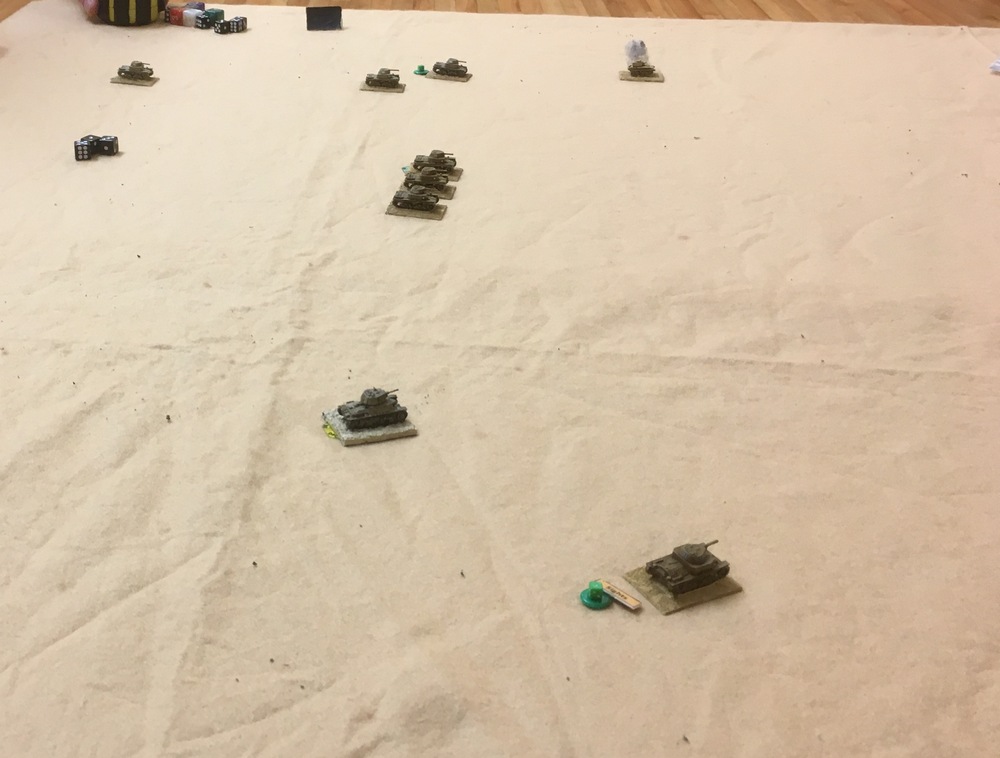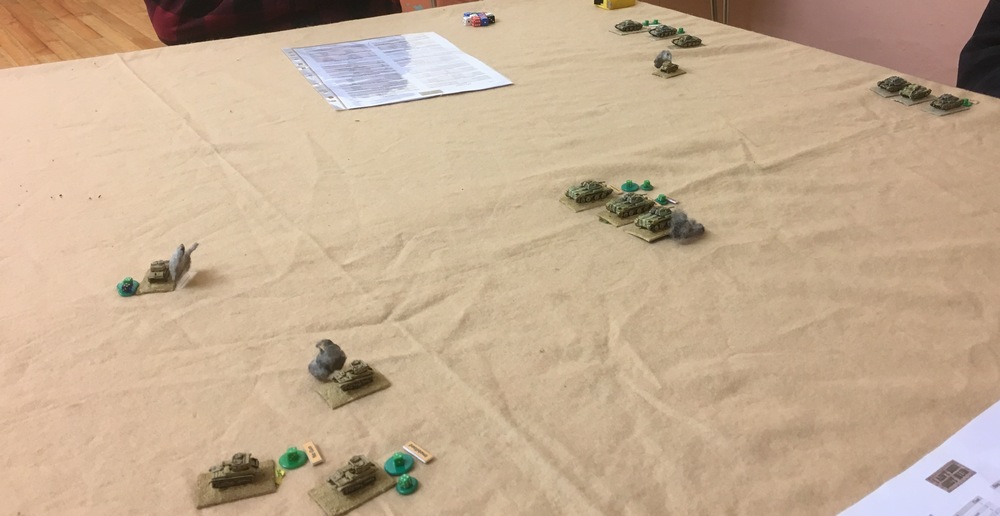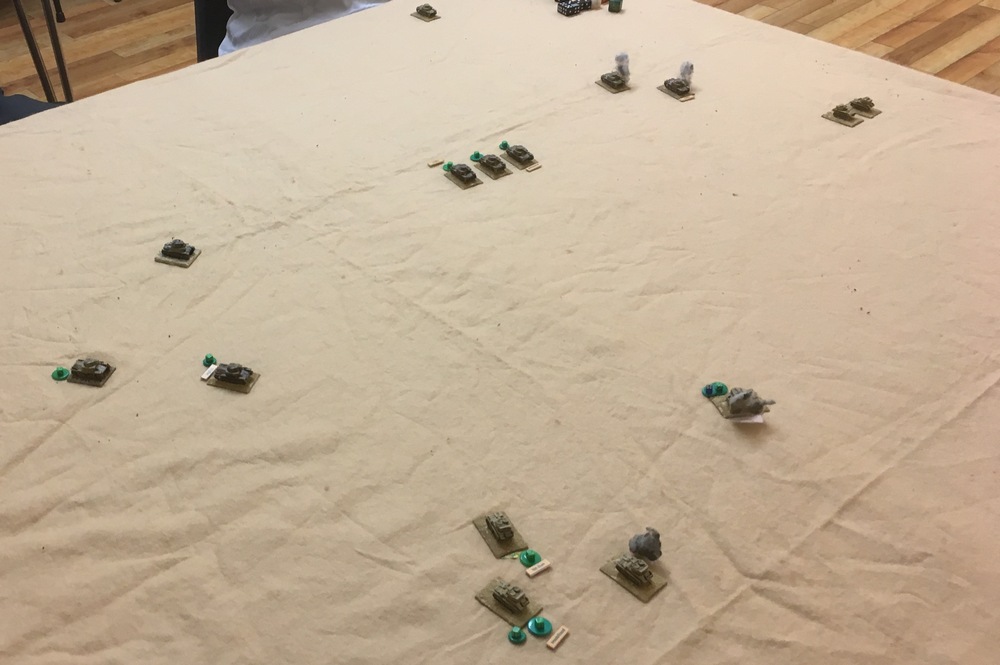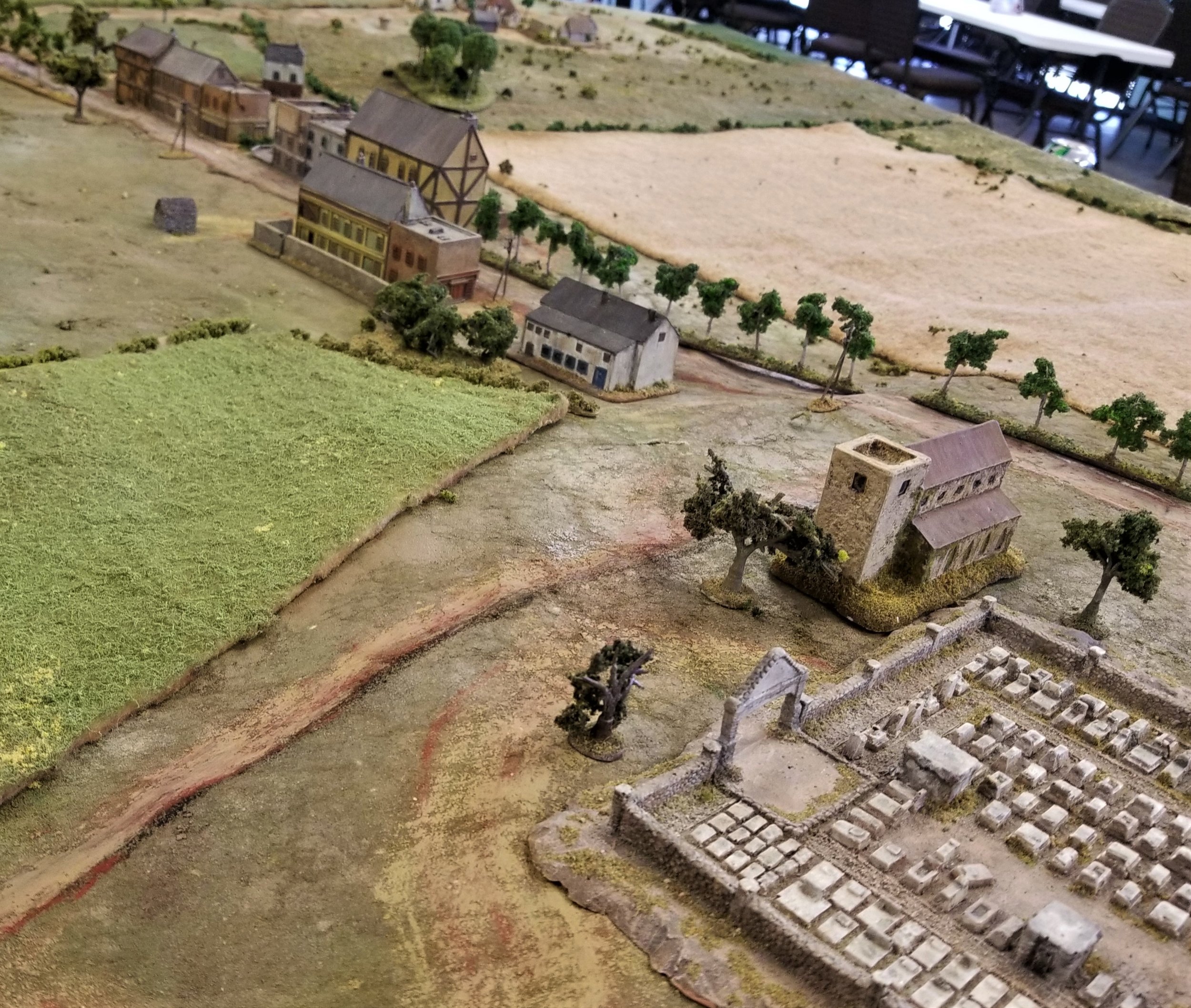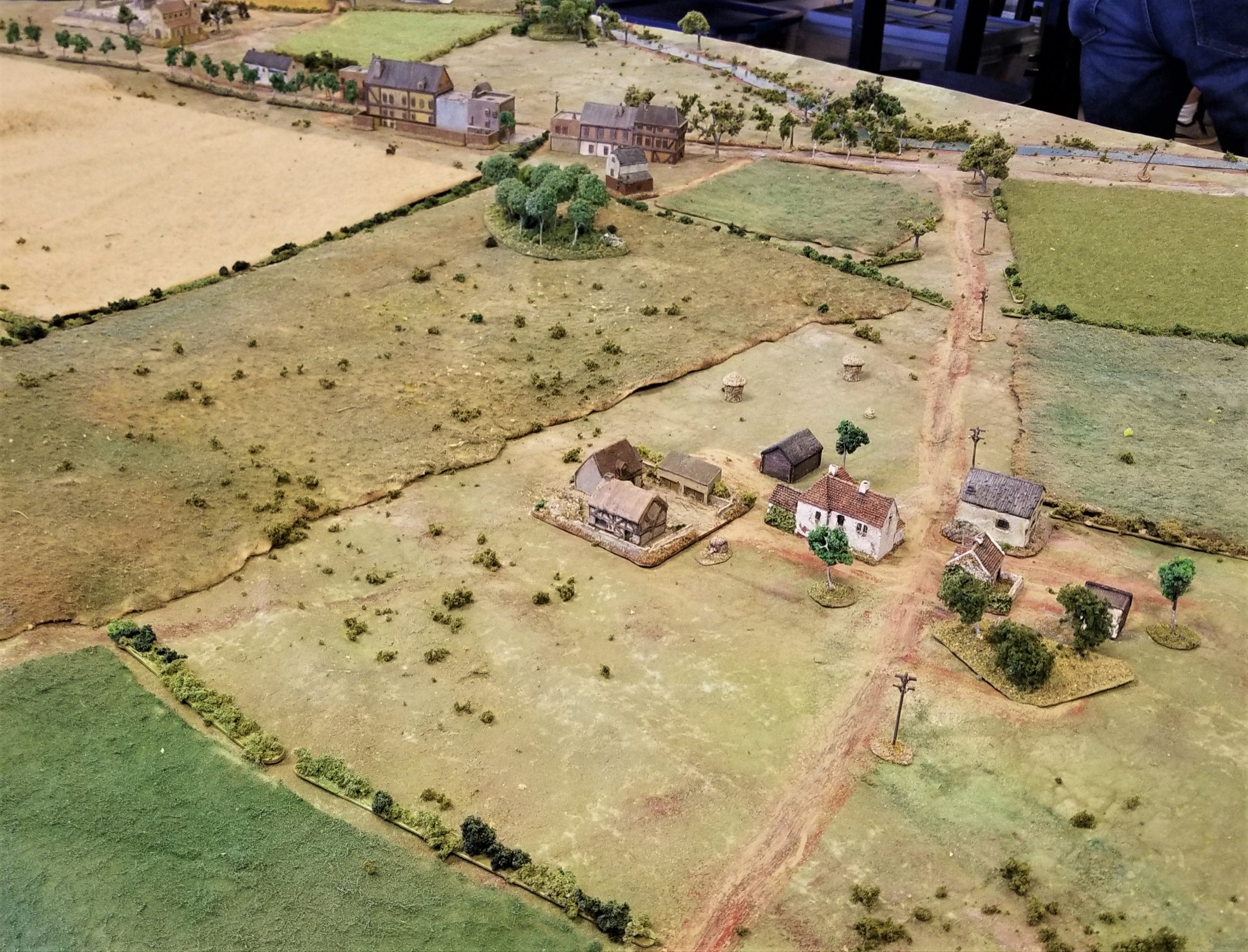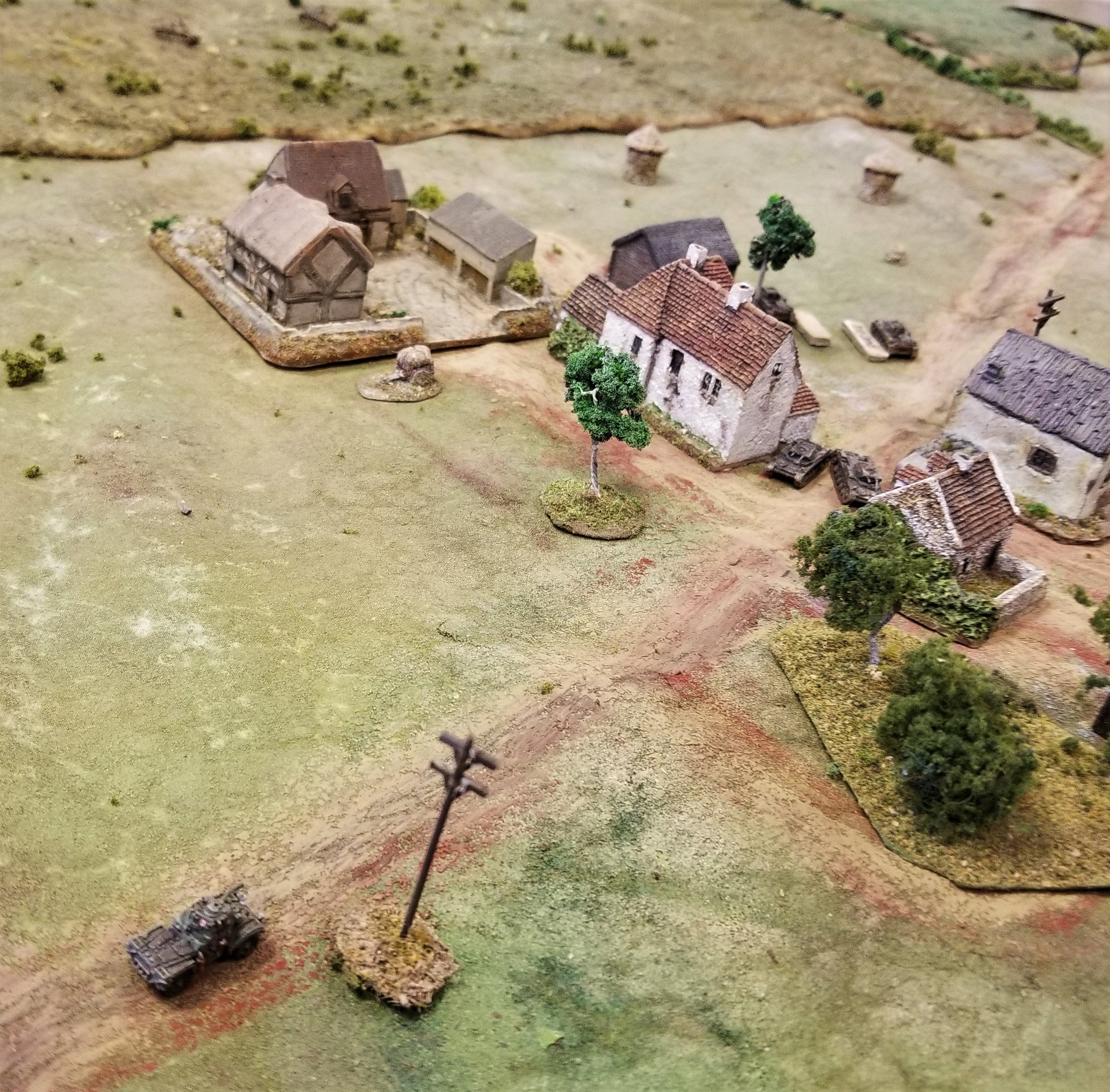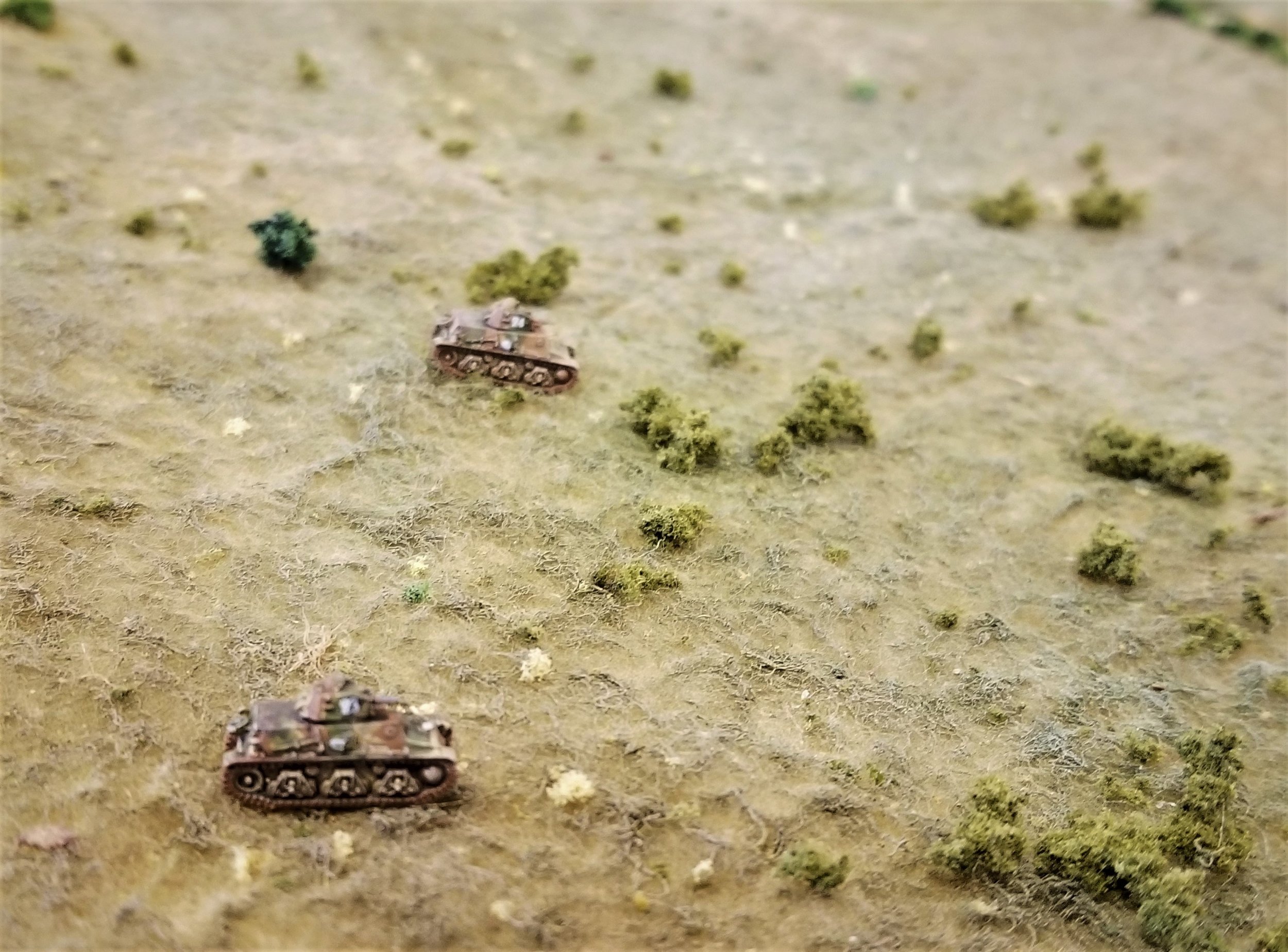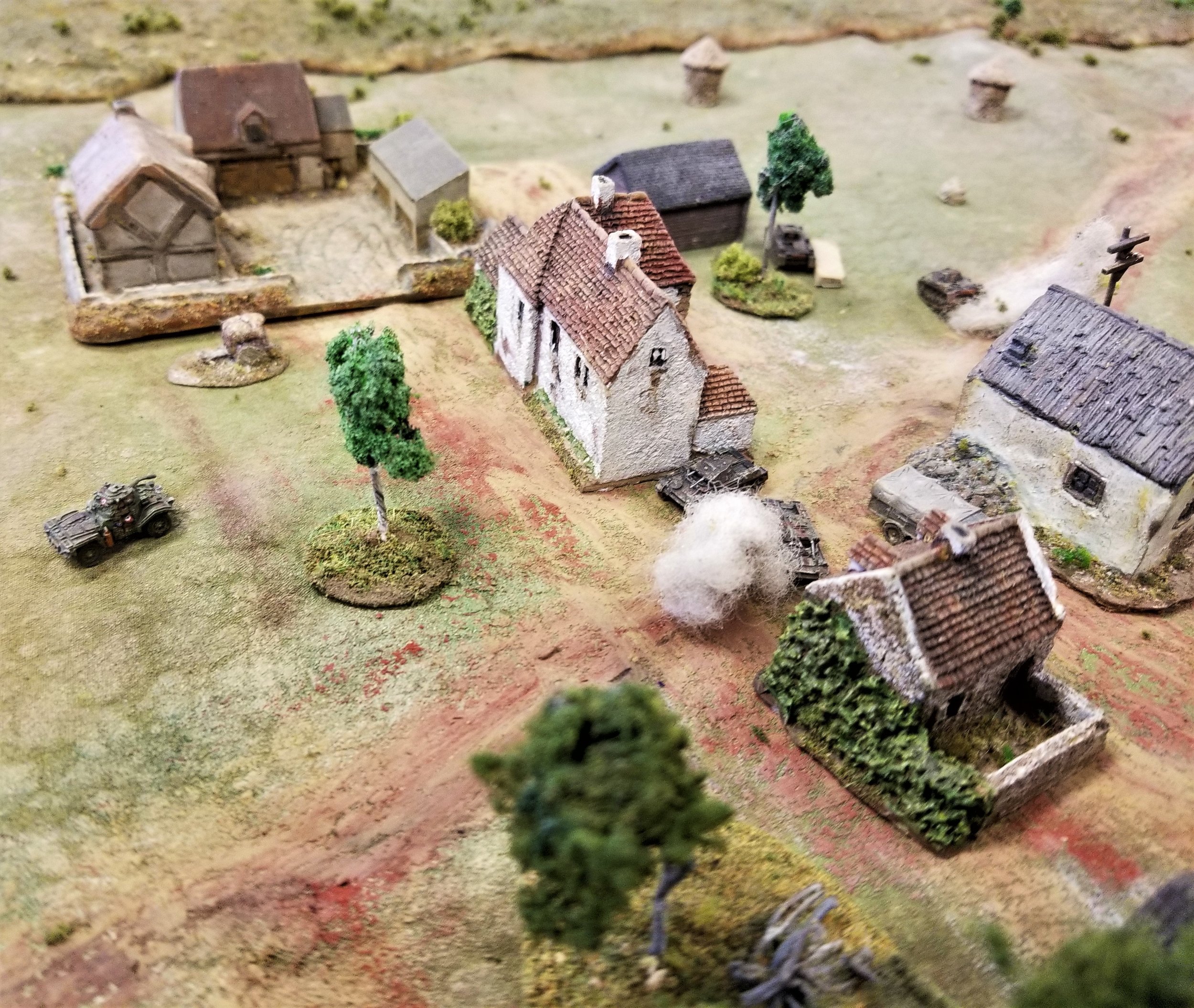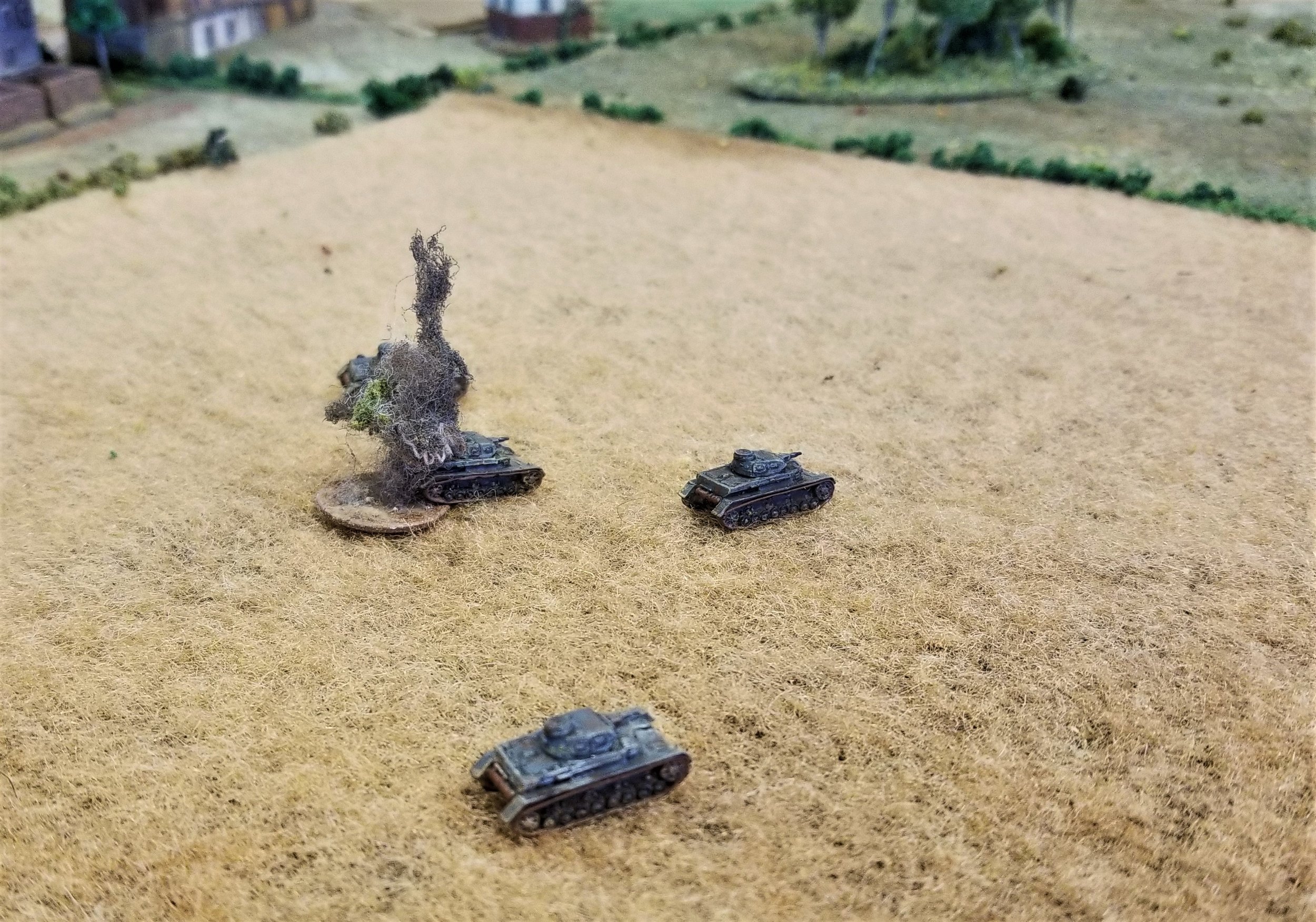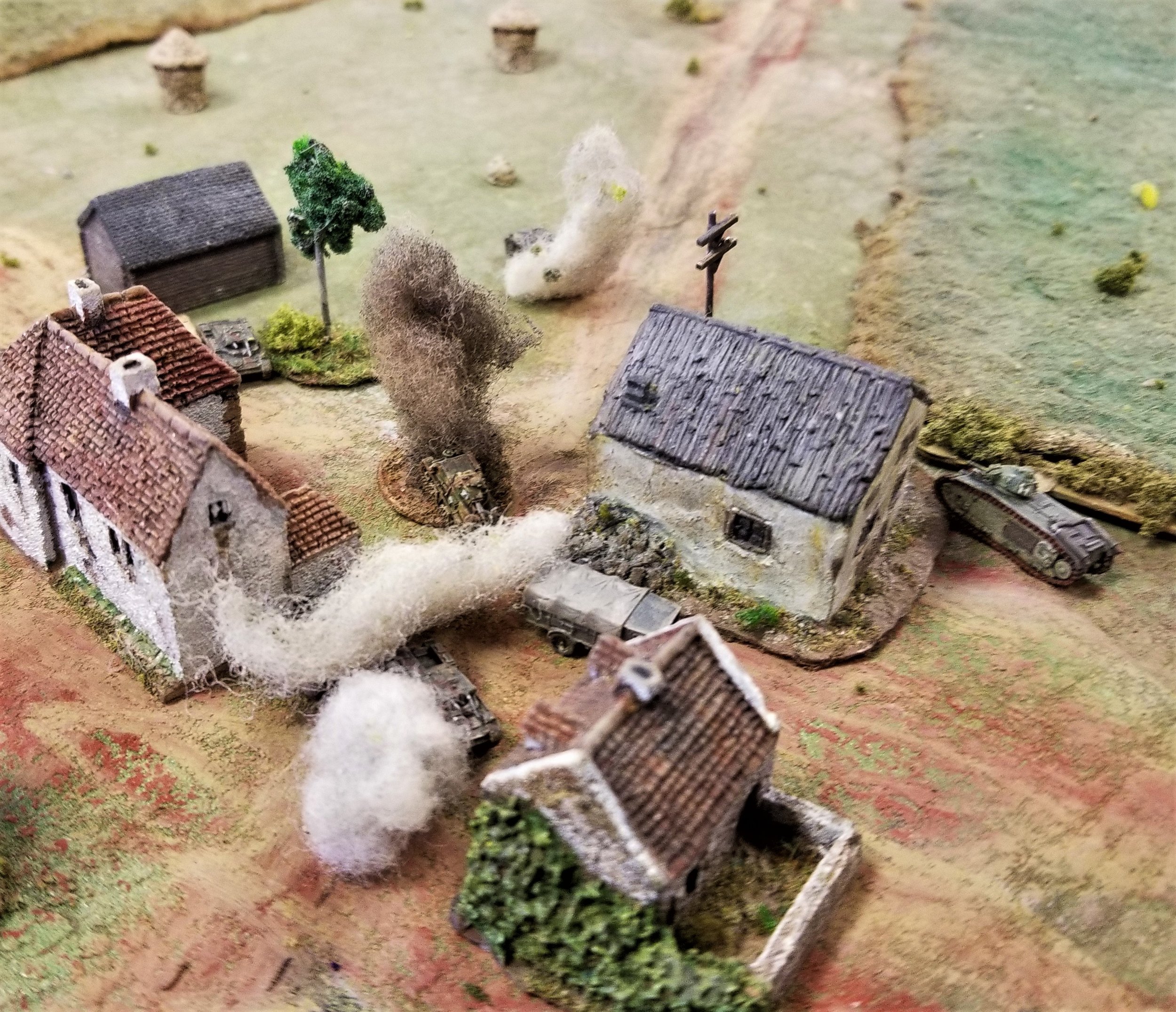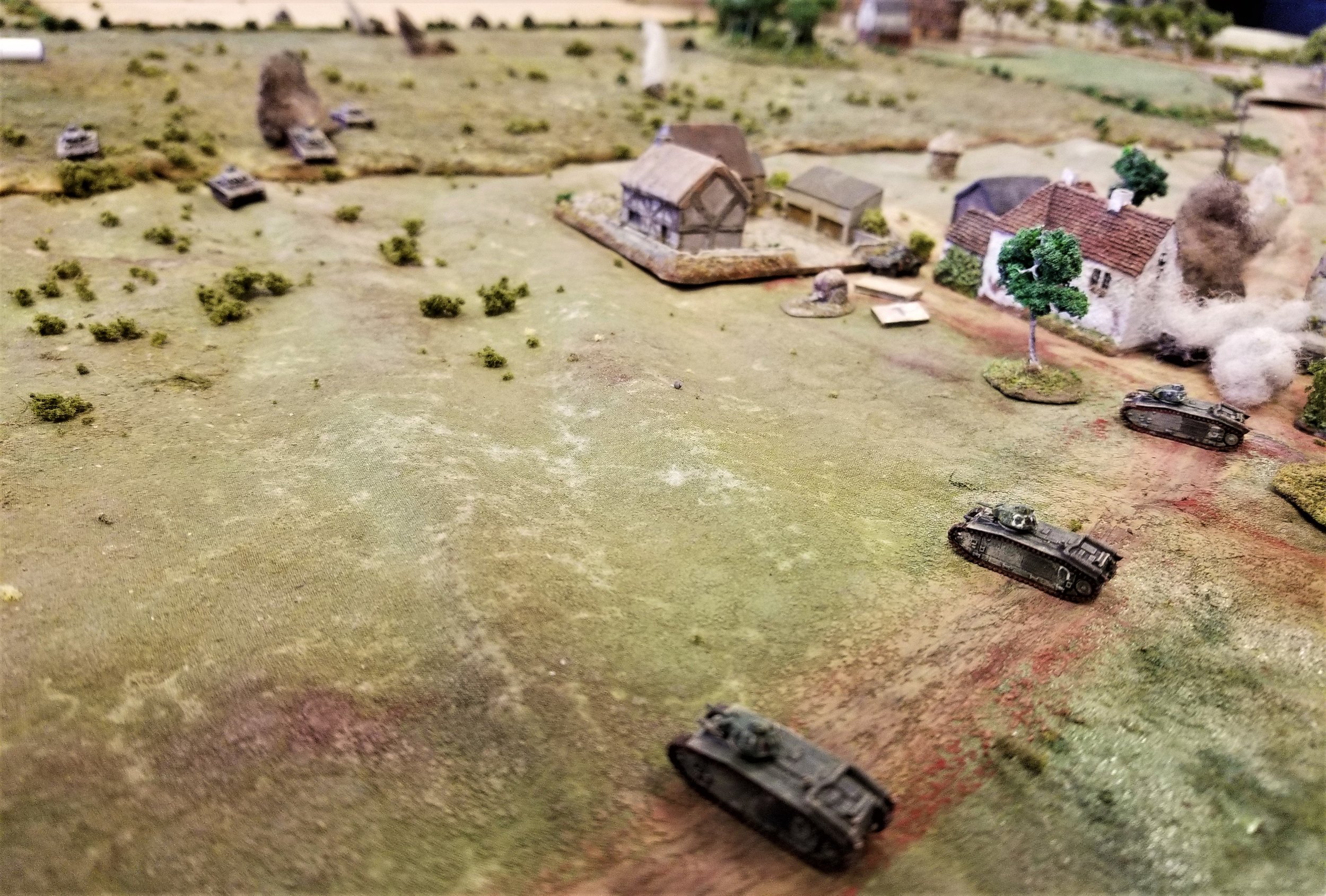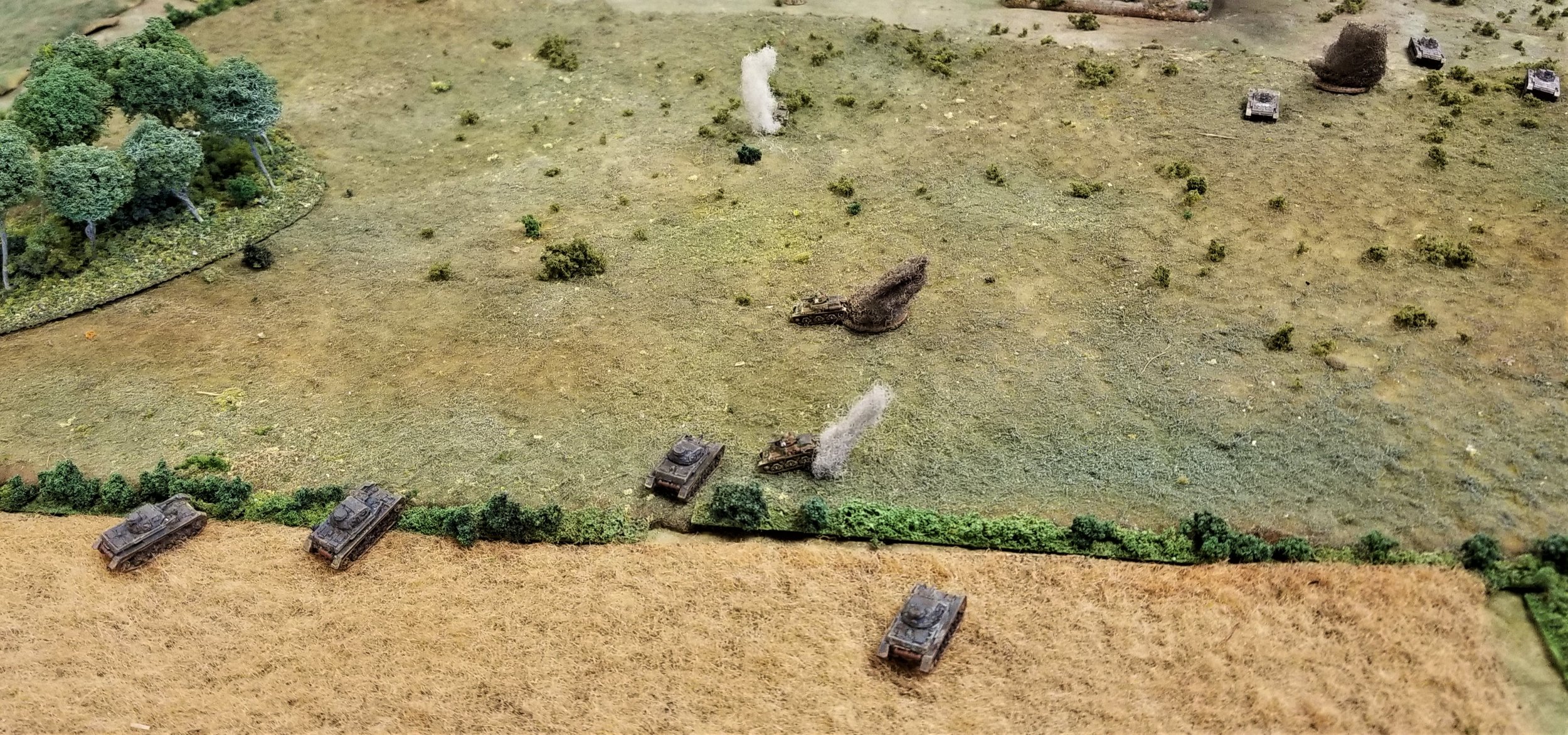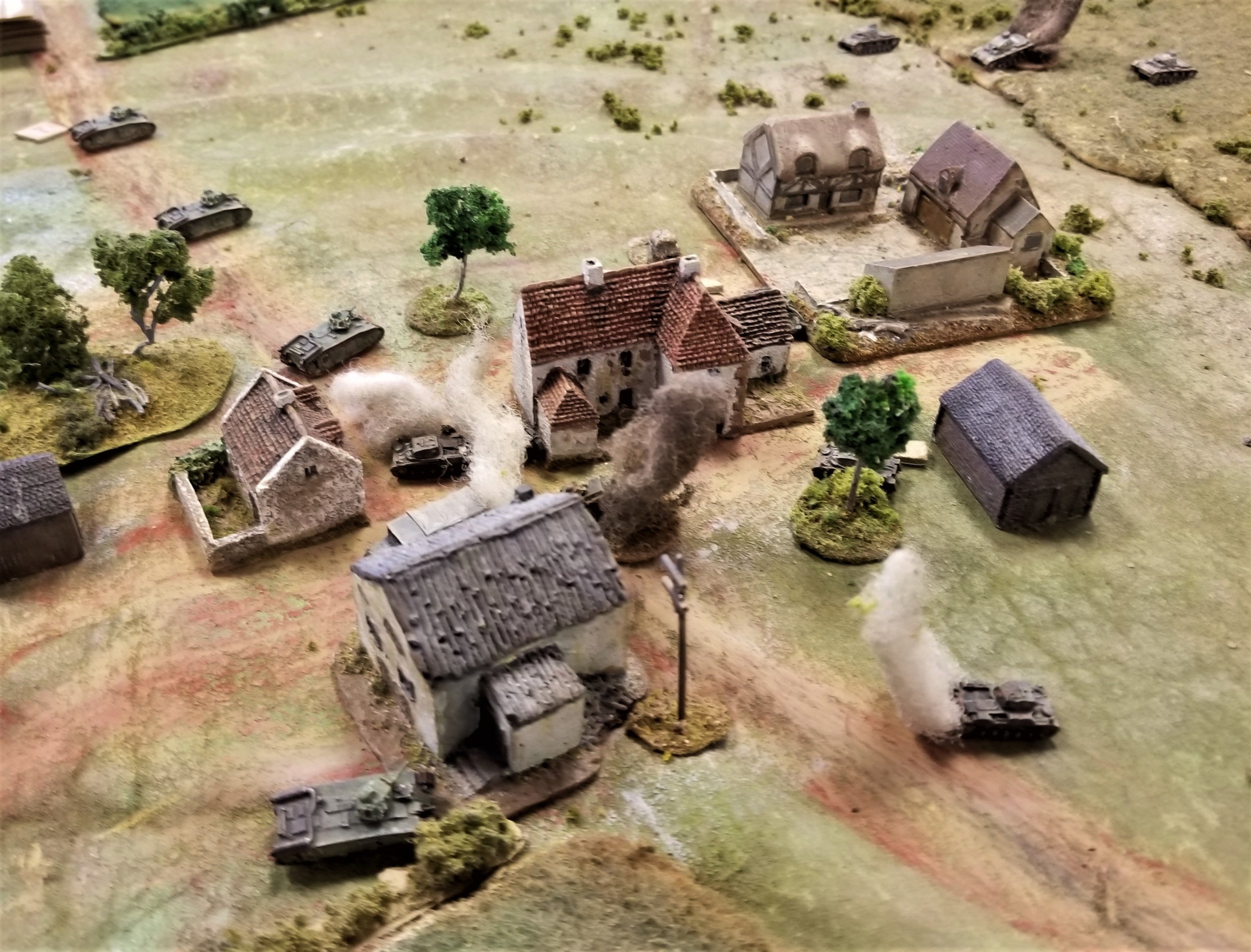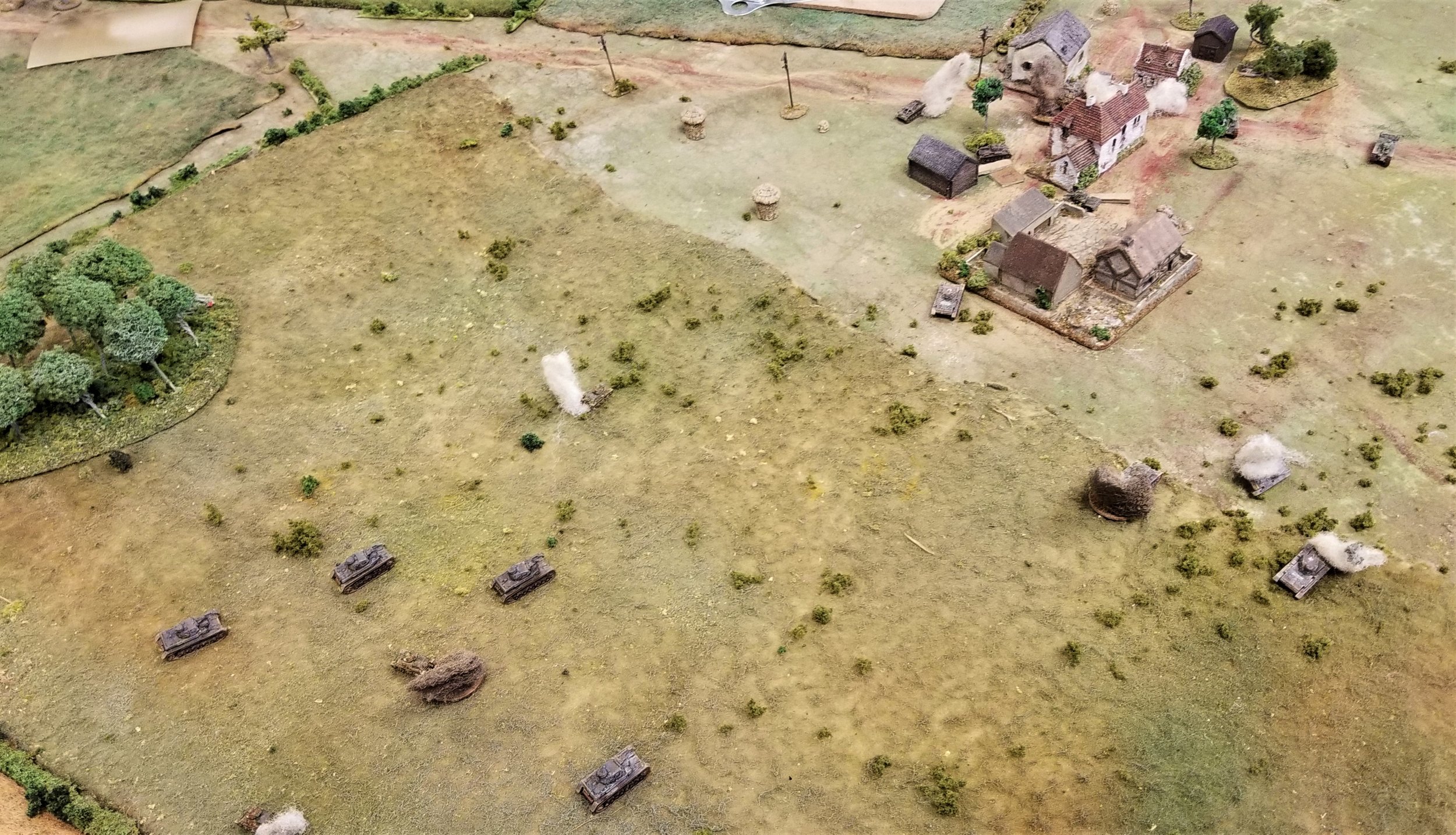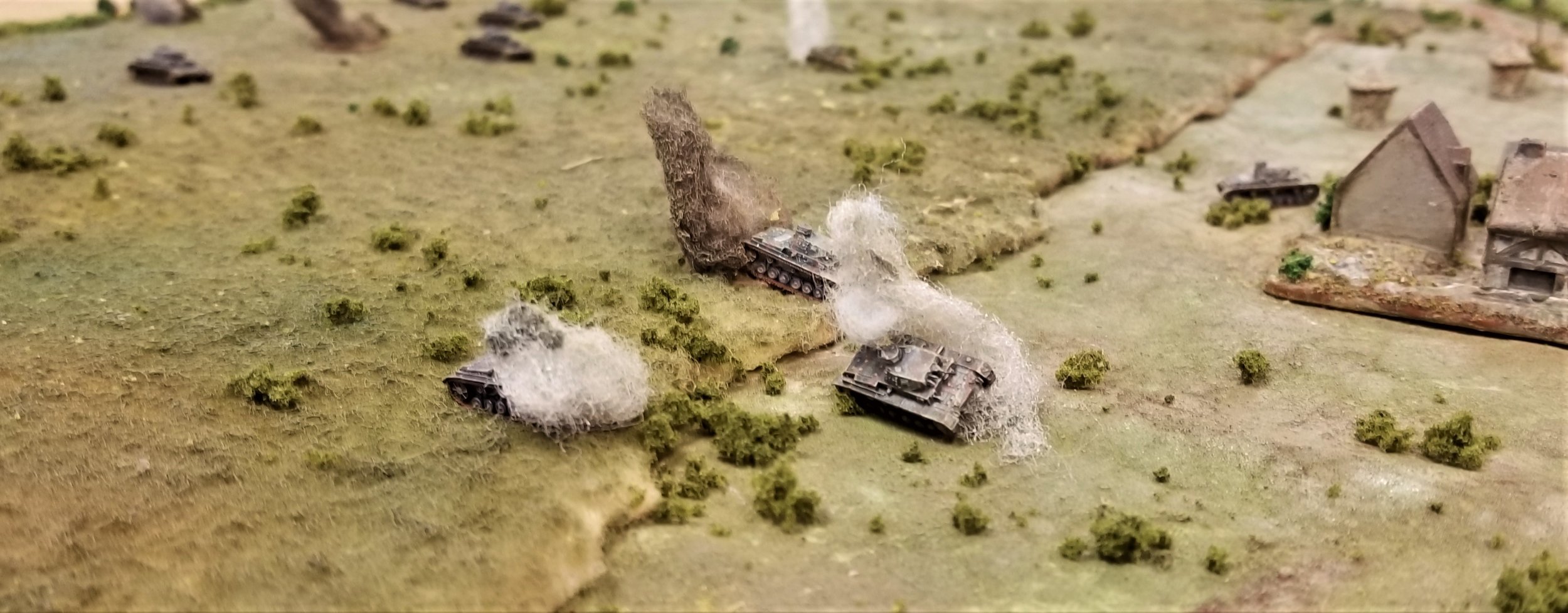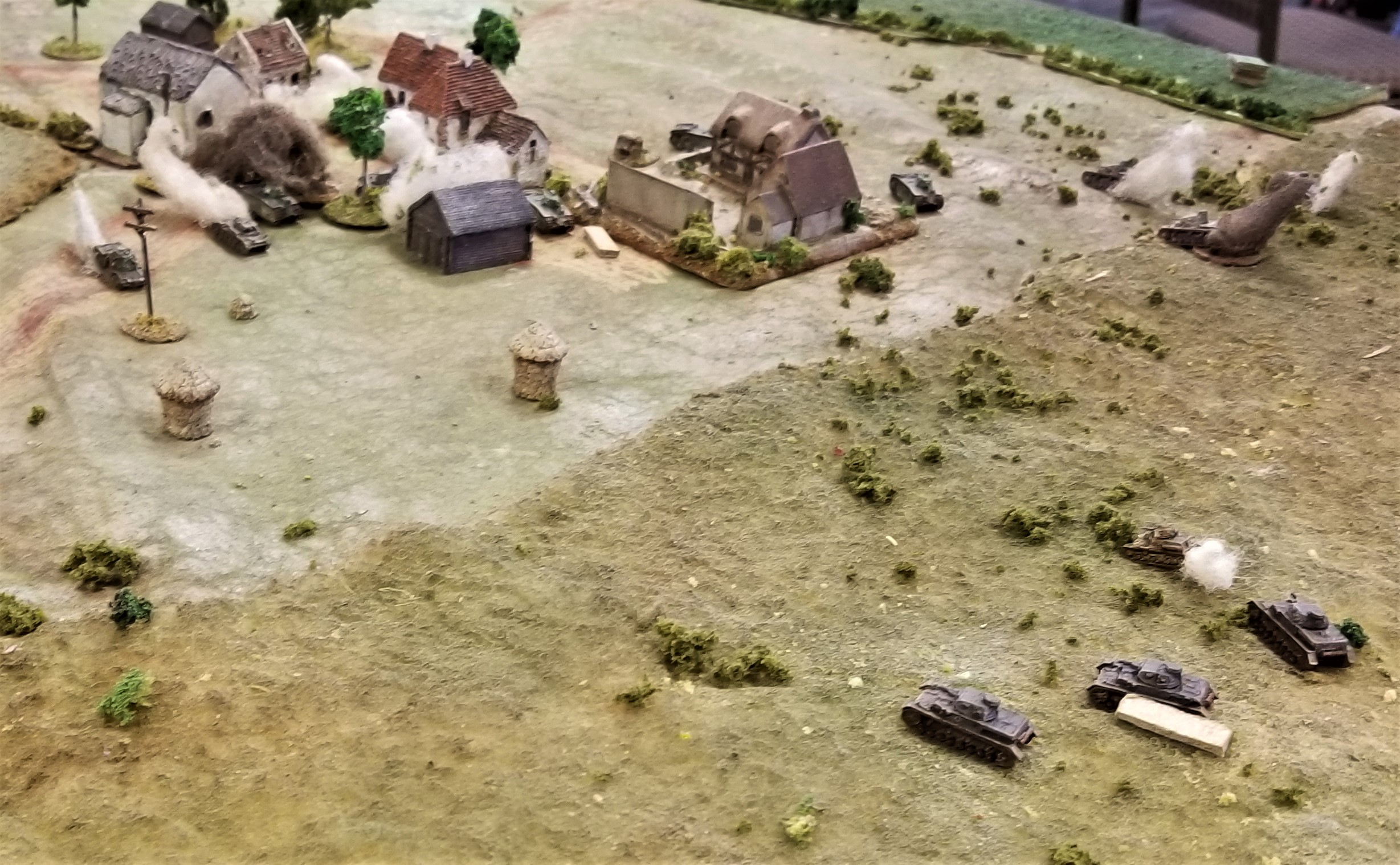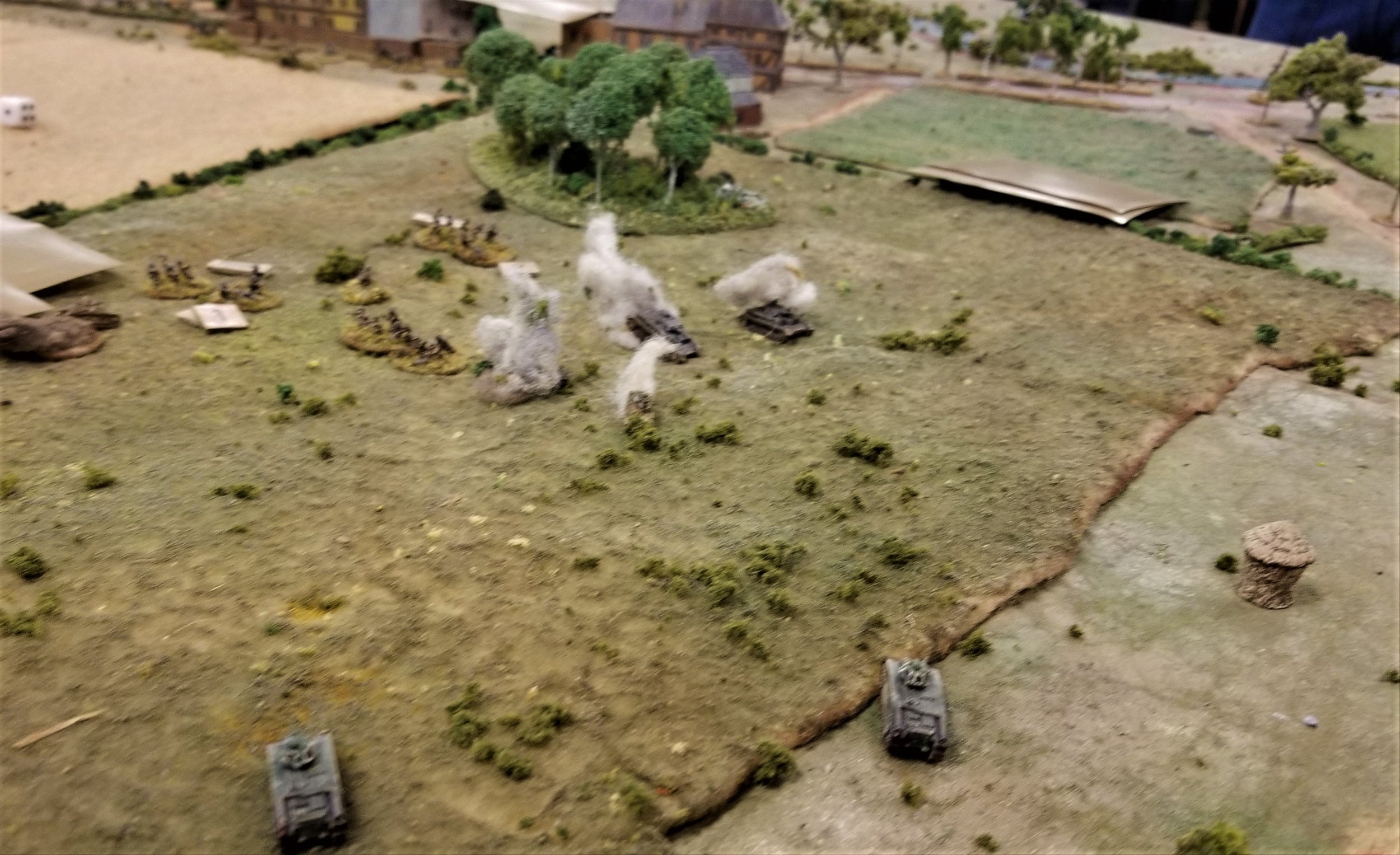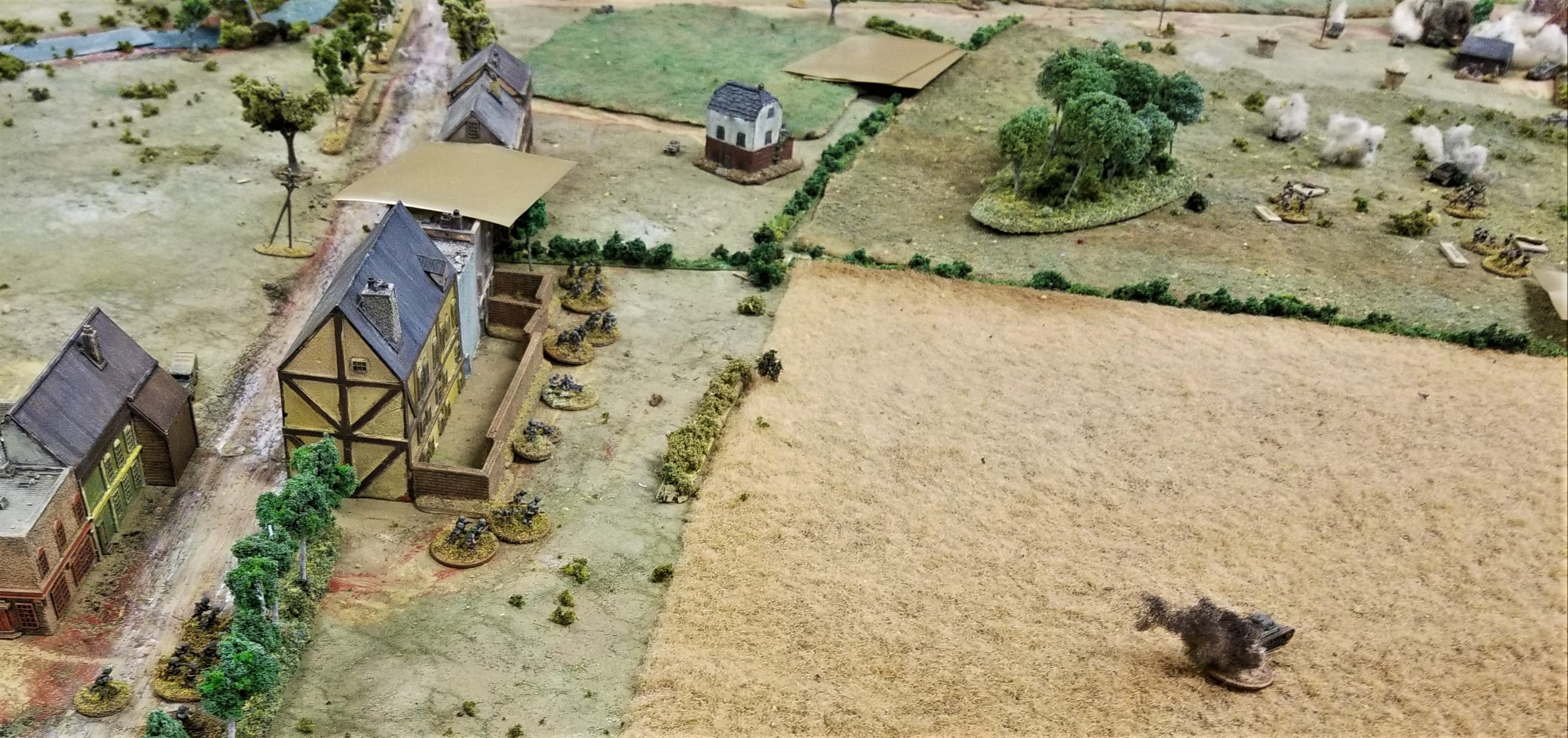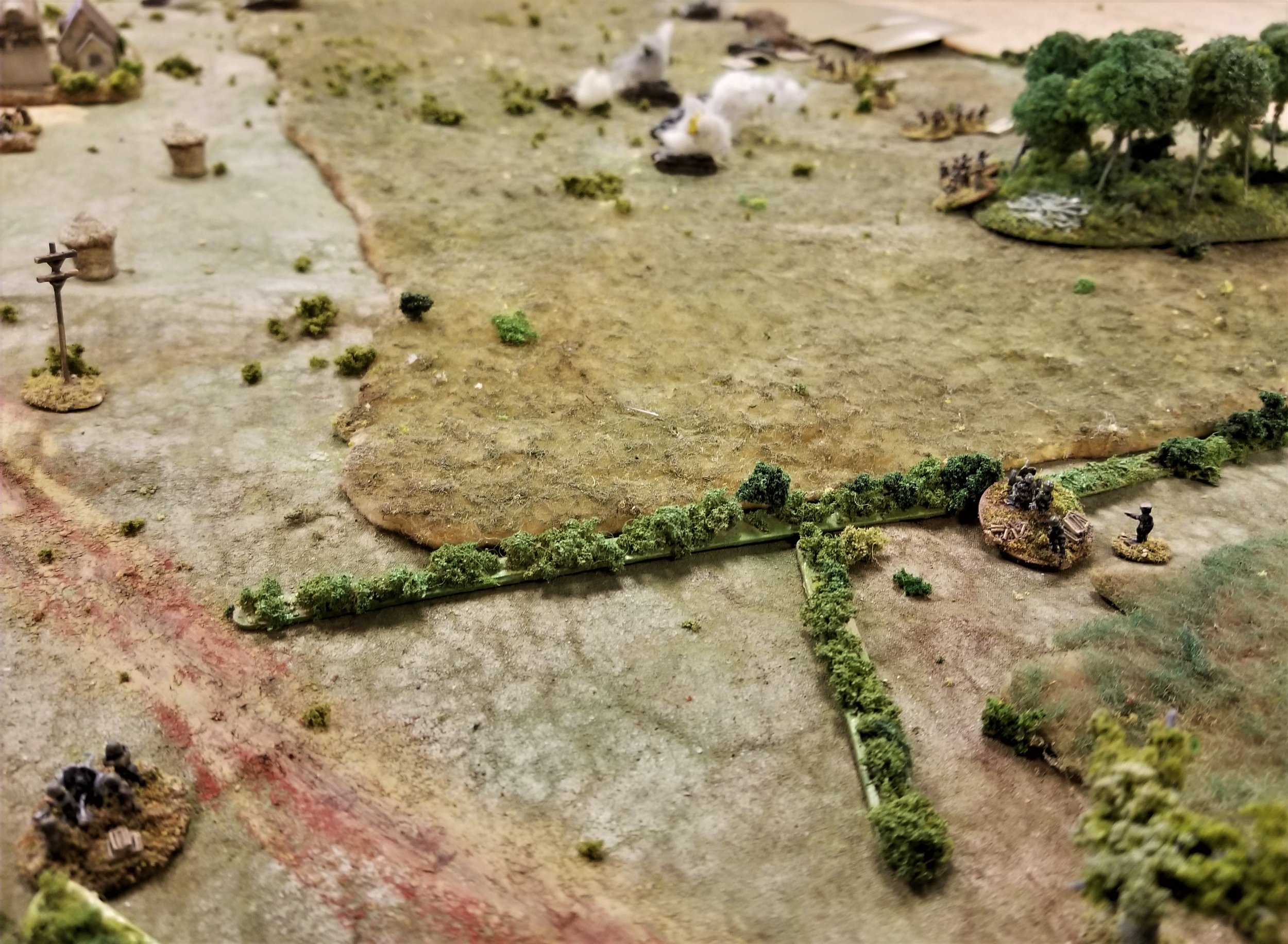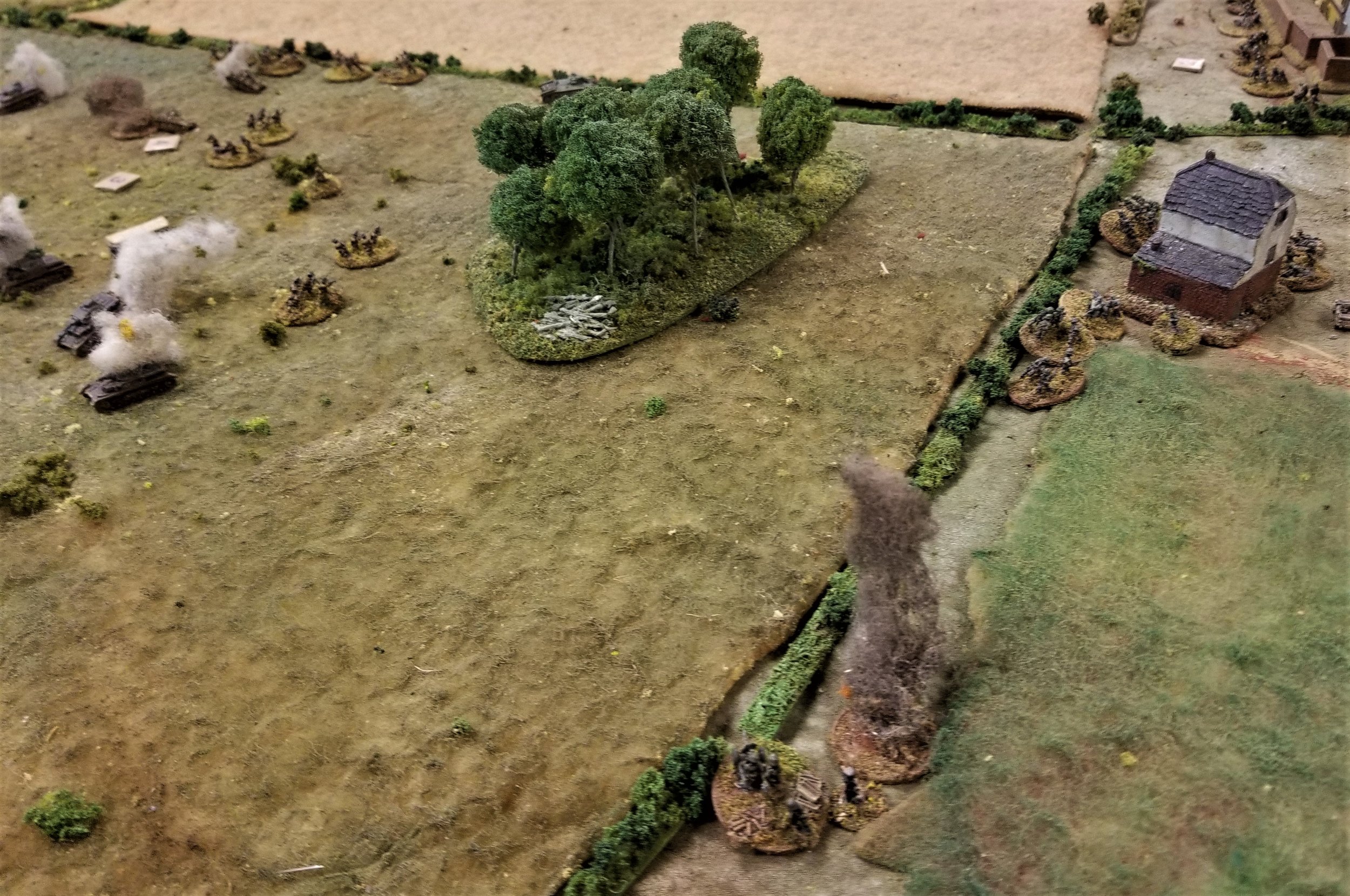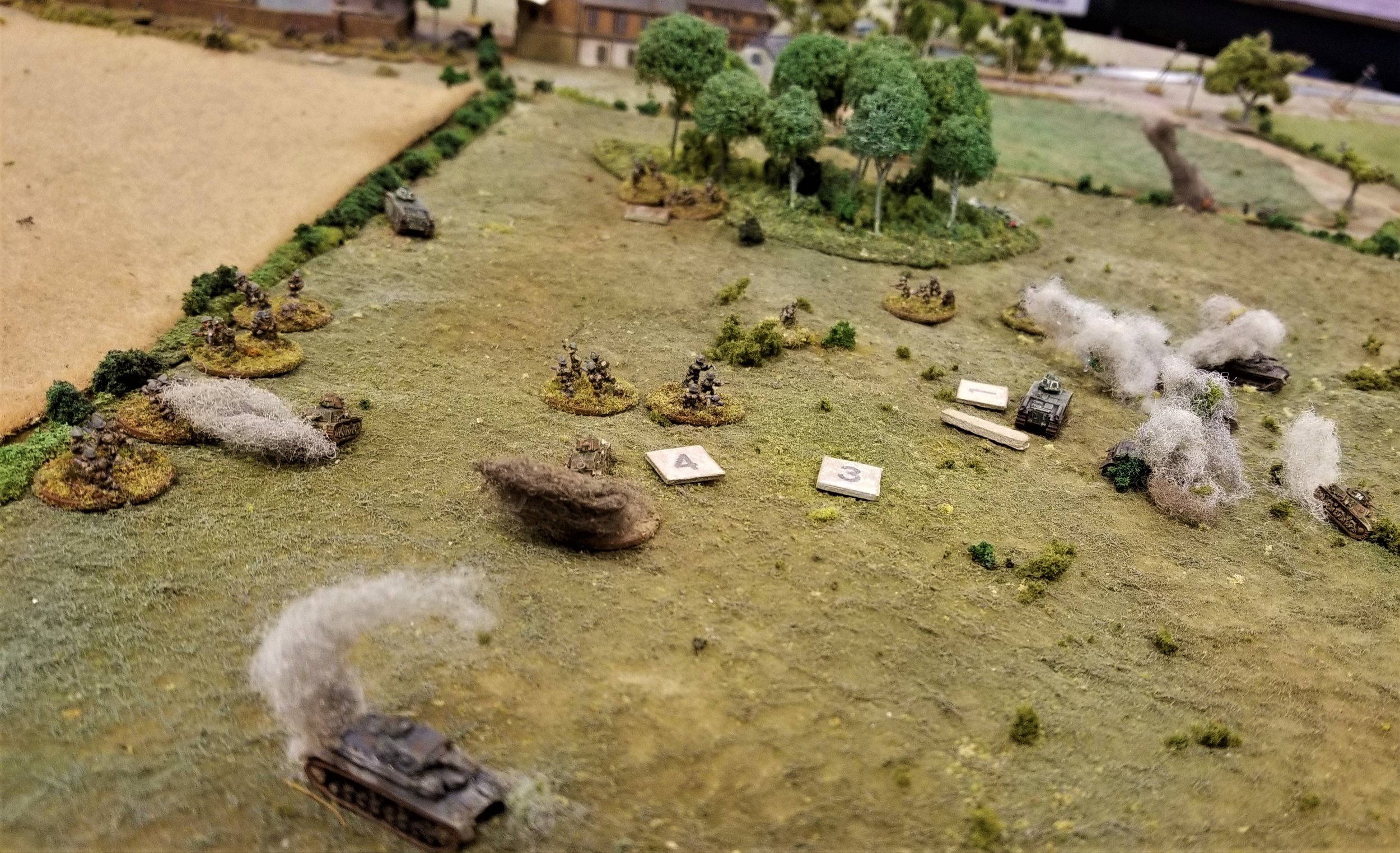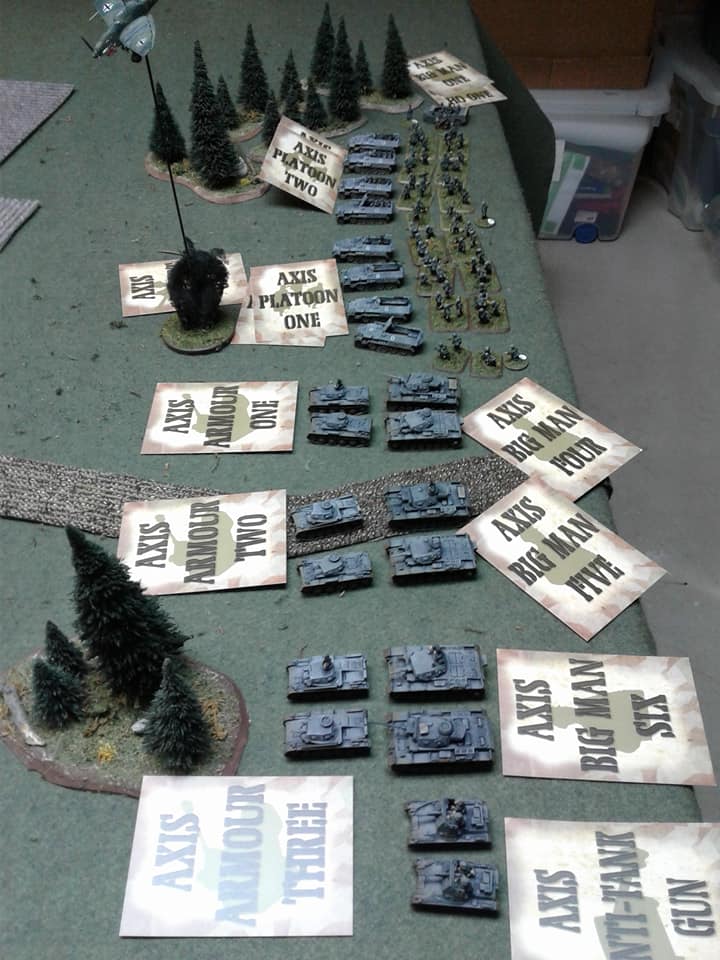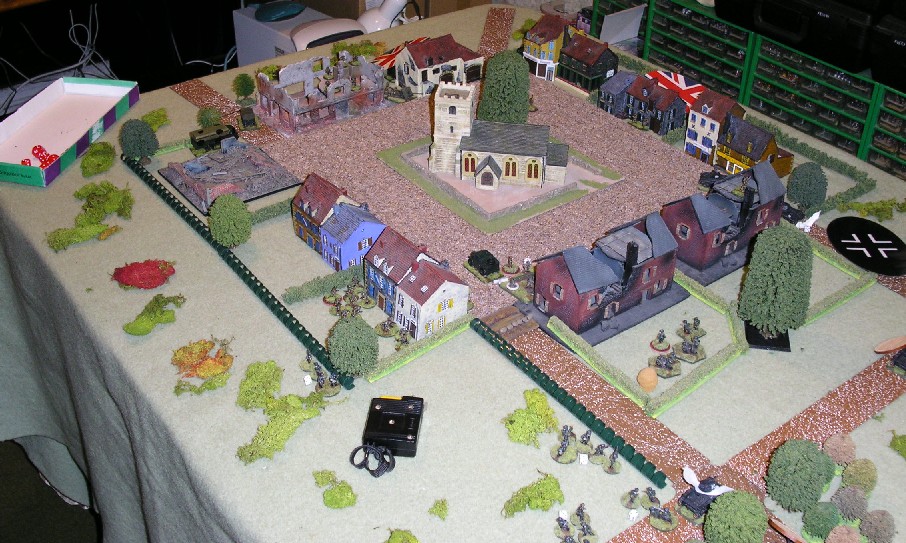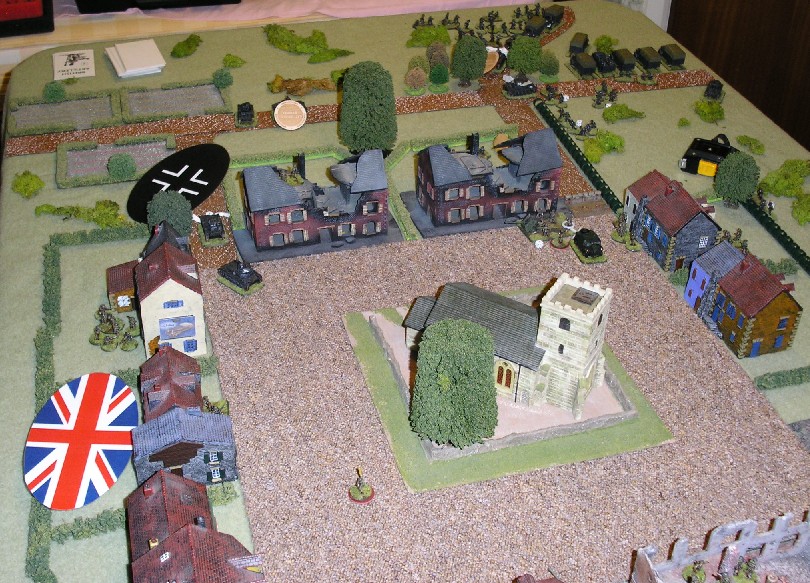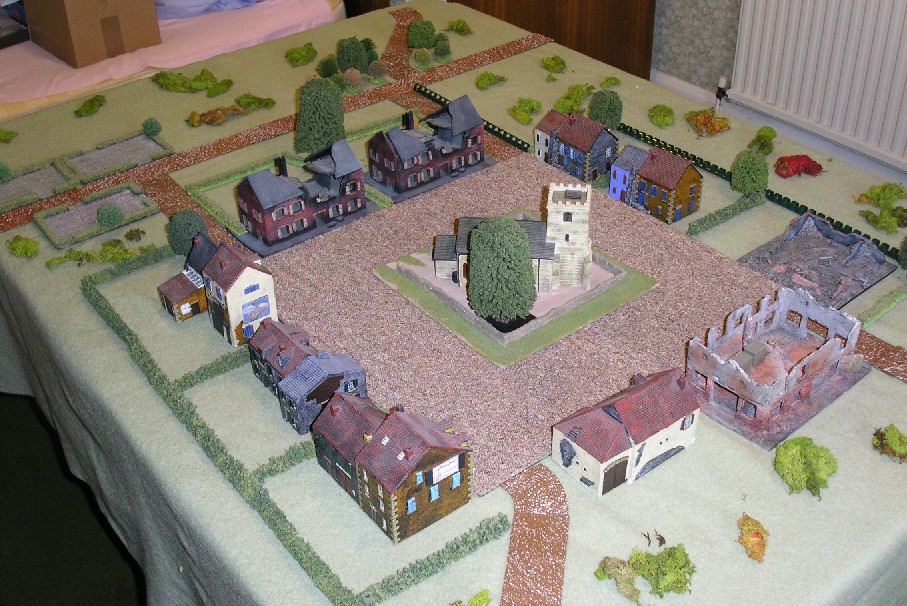Sticking with WW2, Stephen and I decided to try IABSM after our CoC games. Stephen picked a scenario set in the Normandy bocage with an US Infantry Company attacking with the support of five Shermans against two German Panzergrenadier Platoons with three Veteran StuG IIIG (one commanded by a Level 3 Ace!). The Yanks also had a battery of 105mm in support (but thankfully these failed to ever fire).
We have always thought that IABSM had a lot going for it at its 'large' skirmish scale, but we have usually struggled with how Blinds and the card deck work and are used in IABSM: but somehow today we seemed to have got it...at last!
The card and command initiative system combined with unit Actions based around numbers of useable dice works very slickly and plausibly. I am not a big fan of 'buckets of dice hits/saves' AFV combat systems (with a Sherman if it achieves a hit rolling seven 'strike' dice needing 5-6 to 'hit' and then the StuG rolling seven 'armour' dice needing 5-6 to save any such 'hits') but in essence it works, especially when combined with the armour command system of unit orders (Hunt/Engage), Actions, aimed or snap shots, and the damage model of equal or greater 'hits'.
Obtaining the initiative by having your unit or Big Man card appear first is a major boon and of course is random within a deck (that chaos factor I like) and indeed the possibility of not acting in a turn if the 'Tea Break' (end of turn) card appears makes for a nicely unpredictable sequence of actions/events. Lucky Legs of course managed to get every single card out before mine in one turn and I watched as two of my StuGs got pummelled on the road with one suffering its gun damaged and temporary immobilization (with associated effect on Actions) and the Ace being permanently immobilized and shocked!
Of course in hindsight I had no need to reveal them from their Blind as soon as I did, so running such risk.
The rules for Aces are interesting and easy, with the ability to aid shooting, hits and/or effects. The Ace did brew a Sherman, but his mate then suffered a similar fate, and he was then the subject of the attention of three other Shermans for rest of the game, eventually being forced to abandon his knocked about assault gun.
A firefight between the fifth Sherman and my remaining StuG saw the dice demon twice roll five hits out of seven dice rolls, and whilst I survived the first volley, a second saw my vehicle explode damaging a nearby Hanomag and Panzergrenadier section. Just as in CoC, the dice demon seemed to take minimal infantry casualties whilst nearly every volley on my men resulted in kills and shock!
Great stuff overall and a very enjoyable game.
Only complaints (as per most Lardie rules we have tried) is maybe a lack of definition on some aspects especially regarding line of sight and terrain issues. We were unsure just what effect some types of terrain have, and if sighting across multiple terrain types affects firing/vision e.g. if my line of fire crosses a hedge and goes through high wheat is it degraded once or twice ?
To be fair the rules seem to very much a 'gentlemen's agreement' set in many regards, and its easy to establish how much such detail one wants to include. And since small arms firing is either a Good, Okay or Poor shot, it's easy to debate/argue the case for which applies for individual actions and locales. A lack of a points structure means one has to use scenarios or fudge things, but that's fine...just different than say Battlegroup.
We shall be using these again.
Sergeant Steiner












